Nickelodeon, Disney, and the Story of Growing Up
On August 11, 1991, Nickelodeon introduced a cartoon block called “Nicktoons.” Nicktoons began with three cartoons of half an hour each, Ren and Stimpy, Doug, and Rugrats. In the ensuing decade, the network would create several more Nicktoons, including Hey Arnold, Rocket Power, As Told by Ginger, and The Wild Thornberrys. Although the shows varied in popularity, they were a mainstay of kids’ television in the ’90s and early 2000s.
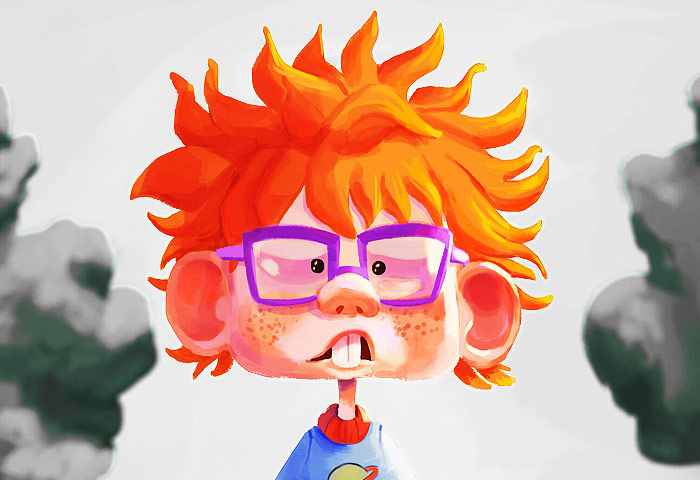
According to many BuzzFeed writers, one’s relationship to Nicktoons is key to identifying as “a ’90s kid.” Justin Charity, a writer for the online magazine The Ringer, calls Nicktoons characters some of Nickelodeon’s “best-ever characters.” Thirty years later, Nicktoons characters and shows are still beloved. Adults who grew up in the Nicktoons era still talk about, analyze, and debate the structure and influence of these shows with all the enthusiasm of the kids they once were.
By far, the most popular Nicktoon was Rugrats. Arlene Klasky and Gabor Csupo, then married, created the concept for the show in 1989. They began with a simple question Klasky posed after balancing caring for her infants with being a work-at-home mom. “If babies could talk, what would they say?” she wondered. This question spawned others, such as how babies viewed their world. Those questions became the show concept, which then birthed the original 65 episodes of Rugrats.
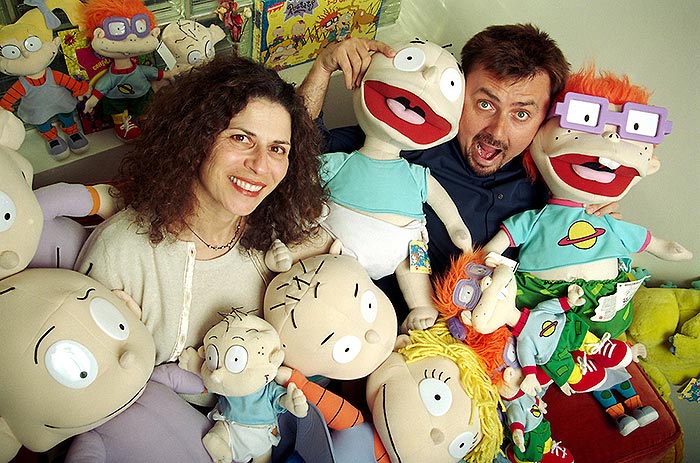
In the ensuing years, Rugrats‘ popularity soared, despite Klasky-Csupo stopping production of new episodes in 1993. Part of the popularity came from some groundbreaking material, notably the Chanukah and Passover episodes that premiered in 1994. Until these episodes, children’s cartoons had never dedicated time to Jewish holidays, nor had they had a major Jewish or half-Jewish character like Tommy Pickles. As not only a part of the Rugrats crew, but its protagonist, Tommy brought both Judaism and a mixed-faith heritage, as well as pride in that heritage, front and center. The Chanukah and Passover episodes also made way for more inclusion and exploration of new territory, as seen in the 1996 episode “A Rugrats Kwanzaa” and in the early 2000s episode “Babes in Toyland,” the first Nickelodeon Christmas special to explicitly acknowledge Jesus.
However, Rugrats wasn’t only popular for its inclusive attitude. Kids inside and outside its primary demographic loved the show because it was so relatable. Younger kids could identify directly with the characters and learn lessons from them. These lessons came packaged as what to emulate and what not to (ex.: Tommy’s bravery and loyalty or Susie’s kindness and patience contrasted with Angelica’s spoiled, manipulative behavior). Meanwhile, older kids could watch and see an amusing microcosm for their childhoods, or a cool way to understand how little kids think. Many of Rugrats‘ most faithful viewers were older elementary kids and preteens, as was this writer in 1994-1998. This was probably due to the baby cast’s charm, the imaginative premise of all their adventures, and the understated humor in how babies processed the world.
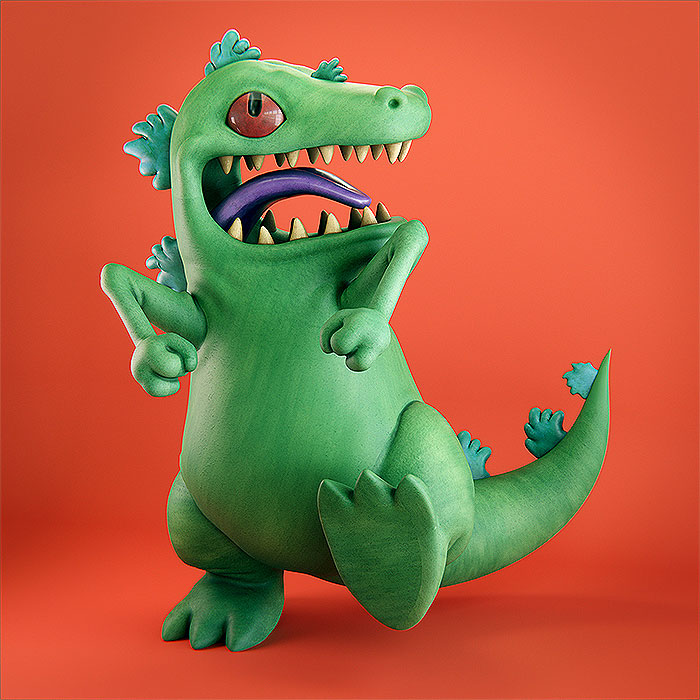
The idea of shows that let characters grow up and process that journey through half-hour episodes stayed with Nickelodeon and later with Disney, who acquired at least one Nickelodeon series and came up with some “kids’ journey” cartoons of their own. In fact, if we look at several popular ’90s-’00s shows across both networks, we can see a definite pattern. Beginning with Rugrats, the shows we will discuss took their viewers through babyhood and the preschool years, through elementary and middle school adolescence, and up to the cusp of high school and late teens. Whether or not a viewer was always in a target demographic, he or she could find elements to identify with in every show and at every stage. Nickelodeon and Disney became not only their entertainment hubs, but their roadmap for growing up.
Rugrats: Babyhood and Preschool
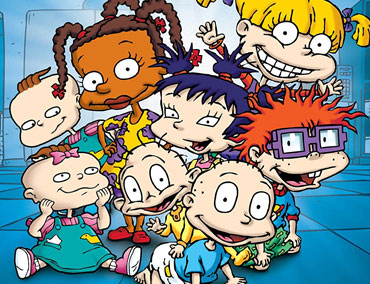
You can’t start growing until you begin living, and that begins with babyhood. Most people don’t remember their infant years, though experts don’t know exactly why. However, most people can point to at least one memory of toddlerhood or their preschool years that shaped, in part, who they became.
Rugrats explores this idea of shaping in greater depth because every episode is from the baby or toddler perspective. That perspective means everything is new, somewhat mysterious, sometimes scary, and above all, huge. The Rugrats gang doesn’t do, think, or feel anything halfway. The gusto and imagination with which they approach life mimics how we as adults might have at their age. It’s also a jumping-off point for viewers who are growing up and may not be babies anymore, but identify with their little animated pals while coping with big emotions.
Baby Curiosities
“Good morning, Champ!” a dad’s voice says while viewers look at a black background. As little Tommy Pickles open his eyes, his parents Stu and Didi exclaim, “Happy birthday, Tommy!” and shower him with confetti while blowing noisemakers. “You’re a whole year old today,” Didi coos. And with that, the Rugrats pilot begins. We go through a typical morning with Tommy, Daddy, Mommy, and Grandpa while they prepare for a birthday party. This includes getting Tommy into his party outfit and feeding him via the classic “airplane” trick while Tommy watches a dog food commercial on the nearby TV.
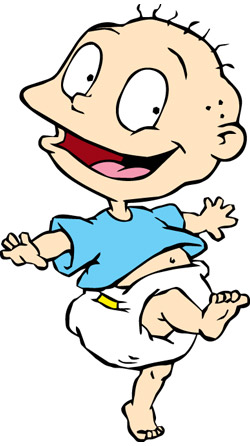
In itself, this sounds cute but potentially boring. Tommy isn’t talking or moving much yet, and it would be unrealistic for him to do so, especially in front of the adults. But the pilot does a great job of showing us Tommy’s thoughts and intentions without much dialogue or action. In the commercial Tommy watches, the dog eating the advertised food immediately runs faster, jumps higher, and has more fun. Plus, his food looks pretty good. Tommy spots the exact same brand of food in his dog Spike’s bowl. A light glimmers off the bowl, and in Tommy’s eyes. Viewers know he’s formed his first baby curiosity: What is dog food? And, is it as fun as it looks?
Later, we find Tommy in his playpen with pals Chuckie, Phil, and Lil, and his cousin Angelica, who at three is 1-2 years older than the rest of the gang. He tells them he wants to get some dog food, and that maybe if they all eat some, they’ll turn into dogs. The kids jump on board, planning how they’ll do dog things like playing fetch and scratching fleas. Angelica loves the idea of biting the mailman. Even Chuckie, who we’ll find out later is hesitant about adventures, is convinced becoming a dog would be fun. The only problem is, these are babies and toddlers. With the exception of Angelica, they aren’t expected to leave the playpen without supervision, and there’s no way Angelica would ever admit to something as babyish as a desire to eat dog food. If anything, her emerging superior attitude indicates she’s only going along with “the babies” because of what’s in it for her. But Tommy is determined–“a baby’s gotta do what a baby’s gotta do,” after all.
Tommy heads out alone on Operation Dog Food, and manages to get close enough to Spike’s bowl to grab some a few times. However, an adult is always there to stop him and return him to the playpen so he can enjoy his party. The hilarious irony is, Tommy and friends are not at all interested in the activities the adults have planned. The harder the adults try to make Tommy’s birthday perfect, the worse the situation gets. The Red Riding Hood puppet show has a stage and puppets, but no puppeteers, so Stu and Tommy’s Uncle Drew agree to perform, but this devolves into them bickering and dredging up childhood history. Didi made a carrot cake from a health food recipe, which no one wants to eat. And Stu can’t get his gift for Tommy, a helicopter-like toy with about a billion buttons and gadgets, to work. “Tommy’s not old enough for that gizmo! Heck, I’m not even old enough for it,” Grandpa scoffs. Indeed, with the adults insisting on perfect party plans and fancy toys, viewers can’t help rooting for Tommy to get the dog food. At least then he’ll reach a goal and enjoy himself on his terms.
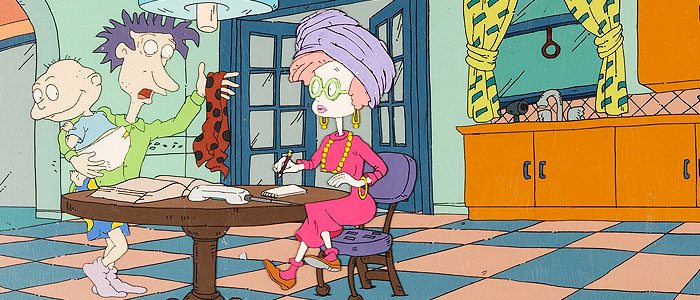
Operation Dog Food goes a little awry, and then, as TV Tropes would put it, horribly right. Basically, Tommy gets the strap of his overalls caught in the helicopter toy, ends up flying all over the house, and crashes into the carrot cake before skidding to a halt directly in front of Spike’s bowl. The adults are oblivious; Grandpa and Stu are arguing, maternal grandparents Boris and Minka are complaining about the cake, and Didi is holding an impromptu therapy session with Stu and Drew, complete with puppets. Tommy and the gang take the perfect opening to chow down. They spit out the dog food in seconds, and lament they did not become canines. This disappointment in the clash of imagination and expectation vs. reality would become a common theme throughout Rugrats‘ run.
What makes the pilot and ensuing episodes great though, is that our baby protagonists don’t act like babies when disappointed. They don’t simply cry and wait for grown-ups to solve their problems. They actually enjoy the chaos birthed from the “ruined” birthday party, and realize it’s a lot more fun to be human. At the end of the episode, they become stars of some candid photos that delight the adults and shift the focus back to the positive–no matter what, a first birthday is a milestone and family is precious. Additionally, with the end of “Tommy’s First Birthday,” Rugrats sets up a winning formula. Each set of episodes will focus on an adventure that revolves around some mundane object or concept the babies need to integrate into their understanding of how life works. The integration may well be tough, and the truth of what they imagined will probably be boring or disappointing. But as long as our protagonists stick together, the journey is sure to stay fun.
Little Friendships, Big Lessons
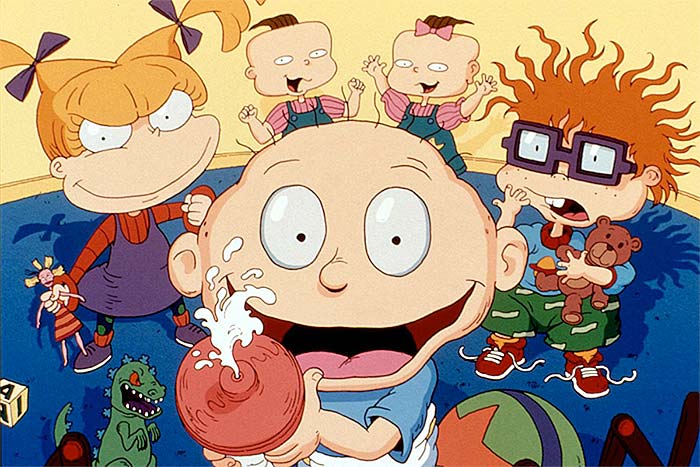
Another reason Rugrats is so endearing lies in the friendships between all its characters. The core group, Tommy, Chuckie, Phil, Lil, and Angelica, are assumed to have known each other almost from day one. Tommy and Angelica are biological cousins; Phil and Lil are the Pickles’ neighbors and identical twins; Chuckie is the neighbor whose dad is best friend to Tommy’s dad. In nine seasons, Klasky-Csupo and their co-creators added new friends to the cast. This included everyone from new neighbor and recurring guest star Susie, to new siblings Dil and Kimi (Tommy’s baby brother and Chuckie’s same-age stepsister, respectively), to periodic characters like Angelica’s “boyfriend” Dean. Angelica rounds out the friendship circle as an antagonist, but also as someone the other kids look up to, and can appreciate on the occasions she shows her soft side.
Within these friendships and family relationships, Rugrats developed the characters’ personalities and quirks. This opened the door for some great episodes centered on miniature versions of social conflicts. Some of the best centered on Tommy and Chuckie. These two are “bestest friends,” but Tommy’s adventurous nature often clashes with Chuckie’s timid one. They also clash on almost every other level, as seen in the Season 2 episode “The Odd Couple.” When Tommy stays over at Chuckie’s for a long weekend, the boys discover they hate each other’s favored cereals and TV shows. Chuckie is meticulously neat, down to stacking his blocks by color, size, and shape; Tommy could not possibly care less if there’s a mess. Tommy asks a stream of questions while Chuckie tries to sleep, and steals all the covers. Chuckie insists everything in his Bogo Block Village stay exactly as it “should” be. Tommy sees no problem with a police car at the fire station, people hanging out of windows, or “completely [taking] apart City Hall.”
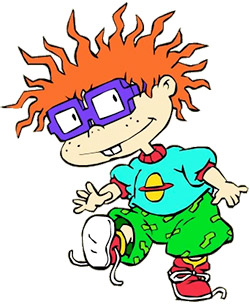
The tension builds throughout the weekend, becoming worse as Chuckie insists on perfection and Tommy prefaces every observation with, “In my house, we _____.” Both boys vent to Phil and Lil when alone, but the twins are already well-versed in the pitfalls of living with your best friend 24-7. All they can say is, “We told you so.” The whole situation boils over when Tommy kicks over Chuckie’s entire box of blocks and Chuckie melts down. Instantly remorseful, Tommy bursts out crying, too. But, just as babies and toddlers have short tempers, Tommy and Chuckie keep a short shelf life on their grudges. They apologize, and Chuckie keenly observes, “I guess sometimes everyone needs to be in their own house and do things their own way.” Indeed, Tommy and Chuckie part on a good note when Didi picks Tommy up. But Tommy is overjoyed to come home to his own messy room–and stack his blocks his way.
Chuckie and Tommy undergo a more serious conflict in “Farewell, My Friend.” When a trip to Chaz’ new greenhouse ends in Chuckie breaking his glasses and getting scraped knees, he blames Tommy for constantly dragging him into “adventures.” In Chuckie’s view, every time he goes on an adventure, he gets hurt or in trouble. This manifests in a nightmare where he falls off a mountain (and then says this is a common occurrence, which confuses Tommy). Tommy counters he and Chuckie have to go on adventures together because they’re friends, to which Chuckie says, “If that’s your idea of friends, you should…get a new idea! Or a new friend.” As Phil observes, “Wow, I guess they’re not friends anymore.”
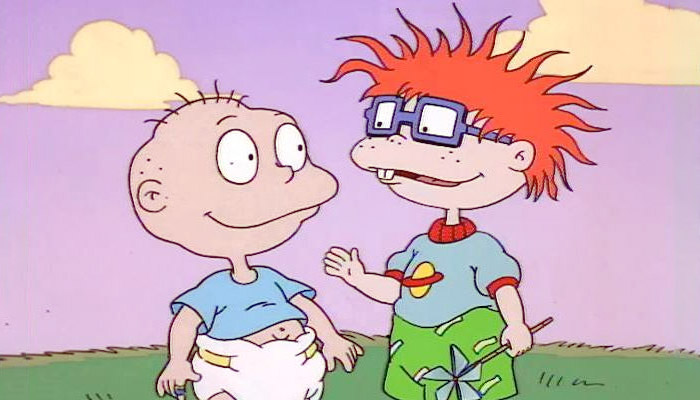
As is typical, Angelica milks this new development for all it’s worth. In moments alone with Tommy and Chuckie, she convinces them they don’t need each other, and in fact, the other is bad for them. Her insinuations work so well, Chuckie and Tommy actively deny how much they’re missing each other to Phil, Lil, and anybody who will listen. When alone however, their assurances of not needing or wanting each other around ring hollow. Viewers, especially older ones, get a good sense of what the episode is saying. Friendships are allowed to grow and change, but Tommy and Chuckie are in no way ready to grow apart yet, nor do viewers want them to. Viewers want to see a happy ending, and they get it thanks to the babies’ vivid imaginations. When Tommy gets caught in the greenhouse hose, Phil and Lil mistake it for a dangerous snake and run for Chuckie’s help. Chuckie forgets his fears and dives in to “save” Tommy, pulling them both away from the hose. Chuckie gets to be a hero, and Tommy, having been in what felt like danger, understands Chuckie’s point of view better.
Baby-Size Family Niches
When you’re a baby or toddler, the world revolves heavily around your family. Rugrats knew this and explored it well in a number of episodes. Many of these focused on one or more character either determining his or her place in the family, or helping adult family members in ways said adults assumed little kids never would.
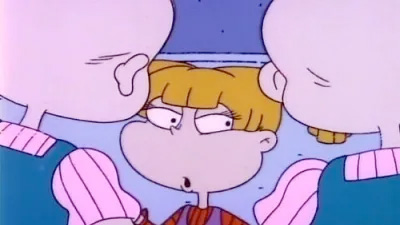
One of the best episodes with a family arc is “The Unfair Pair,” starring Phil and Lil. When Angelica spends the day with the twins, she gets upset that they never play “three-people games” and thus, she’s left out. In usual fashion, she determines to pull the twins apart, and uses their sibling relationship to do it. Angelica tells Phil and Lil every family has a favorite kid. For example, she, Tommy, and Chuckie are the natural favorites in their families because they’re only children. But since Phil and Lil’s family has two kids, they need to determine who’s the favorite and who’s the “reject”–read, the kid who doesn’t get any love or attention and “has to live in the basement all by hisself” [sic]. Both twins imagine what it would be like to be in either position, and ask for Angelica’s help in figuring out who’s who, once and for all.
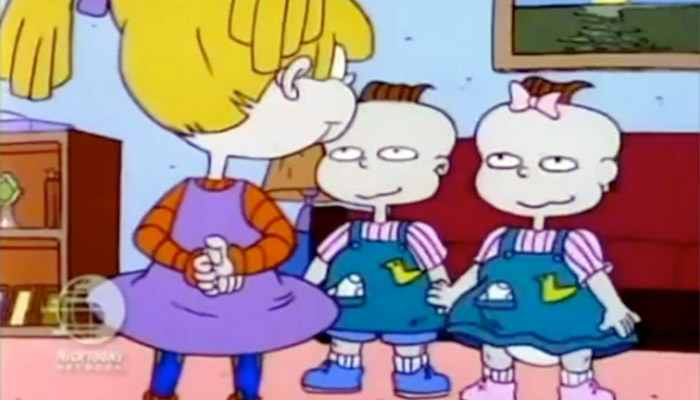
Angelica manipulates the twins throughout much of the episode, setting up situations where they might be treated unequally. She suggests Phil and Lil get a cookie, knowing their dad will break it in half and the twins will fight over whose half is bigger. When they do, Angelica ends up eating both halves–thus, an extra cookie–out of supposed concern for equality. Then Angelica suggests Phil and Lil play with the telephone, “something you’re never, ever supposed to do,” to test who Mom and Dad will get mad at. Whoever gets the blame is the reject. Yet when Mom discovers the twins, she says, “They didn’t know what they were doing” and goes on with her day.
Phil and Lil are ready to conclude, rightly, that Mommy and Daddy love them both equally. Angelica, though, won’t let the issue drop. She goes for the “nuclear option,” telling each twin privately that the other one is the favorite, so the “reject” twin should leave for the basement. On the surface, this looks like another of Angelica’s toddler-level schemes Phil and Lil will have to thwart. Under that layer though, the writers did a clever job of tapping into a common family worry–that a parent will always secretly love a sibling more. Additionally, they tap into Angelica’s badly handled, but touching insecurity. That is, she’s been left out around Phil and Lil, and although she wants to play with them like a friend, she doesn’t know how. She’s also jealous of their twin bond, and perhaps of the way their parents distribute love. Angelica has learned her own family niche is lonely and unstable. Unless she’s the “favorite” and center of attention all the time, maybe she’s a “reject.”
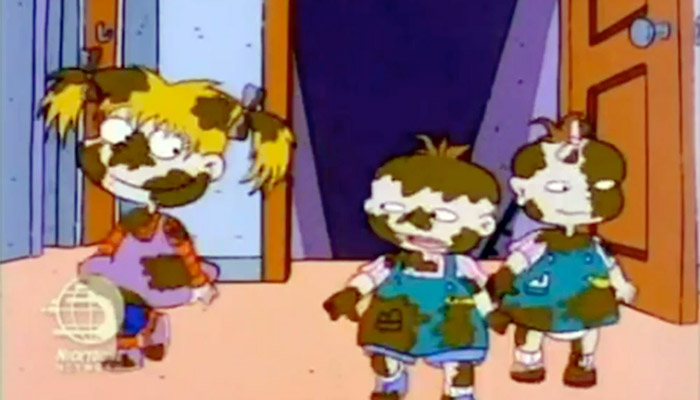
The favorite or reject situation resolves with signature Rugrats warmth and humor. Phil and Lil end up playing in the basement together, glorying in its icky denizens. Intrigued, Angelica shouts, “Wait for me, I wanna be a reject, too!” and heads down to play with them. All three kids emerge dirty, smelly, and laughing. Phil and Lil’s bond is cemented, and Angelica has a chance to be the honorary family member she wanted to be. Plus, there’s a lesson for viewers about what family love should look like–as equal as possible, honest, open, and welcoming toward others. Later episodes would explore family love and its facets in more depth, such as during the two-parter “The Family Tree” where Tommy finds out he’s getting a little brother. In the meantime, the Rugrats would start learning how to take the love and security they’d established, and use it to help them cope with the strange and scary.
Facing Little Fears With Big Heart
For babies, the world is both exciting and frightening. Many concepts are too large and complex for little minds to handle, so what seems mundane to adults can be terrifying for kids the Rugrats’ ages. Rugrats explored this truth often, letting the babies face and triumph over their fears in different ways. Chuckie, who’s known for his phobias, was often the center of fear-based plots. In fact, many viewers remember Chuckie-centered plots as the most touching in the canon. This is because Chuckie, whose mom died before the series, has already dealt with significant trauma. Coupled with his almost uber-innocent and anxious personality, the underlying trauma makes him a deeper character and easier to root for than usual.
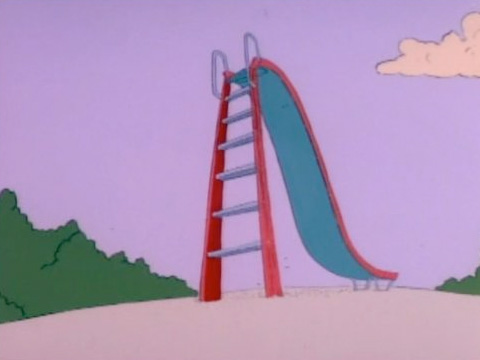
“The Slide” encapsulates a great example of Chuckie’s growth in these areas. Chuckie normally loves the slide, but after accidentally getting trapped on “the big, big slide” at a pizza place, he’s terrified to go down again. While Chuckie is usually content to let his fears stay as they are, this time he wants to change the situation. He loves and misses his slide, and feels more isolated and inept than ever without it. After all, as Phil observes, the slide was one of the only things that didn’t scare him. Worse, Angelica taunts Chuckie at every turn and tells him he will never be able to slide again. Older viewers will recognize and relate to her insidious destruction of Chuckie’s confidence.
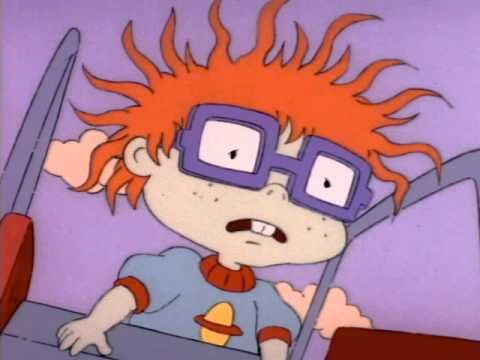
The babies decide to seek help from Susie Carmichael. Susie is three like Angelica, but is Angelica’s foil in personality. She’s kind, helpful, and downright wise for her age. Susie quickly deduces part of Chuckie’s problem is self-pity, and encourages him to think of himself as capable and brave. “You’re like a big brave dog,” she proclaims, coaching him to say, “I’m a big brave dog” over and over. With Susie’s affirmation, plus his other friends cheering him on, Chuckie confronts the slide and makes it down successfully.
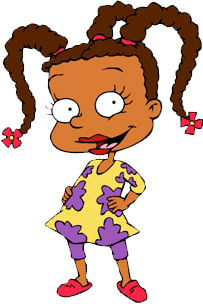
The best thing about “The Slide,” though, is how the episode deals with the psychology surrounding Chuckie’s fear. Namely, Chuckie is given the choice, and then the empowerment, to overcome a fear that’s important to him. He doesn’t have to overcome all his other phobias, or face fears at any pace other than his own, to retain his friends’ loyalty and respect. In fact, Chuckie’s support system is the reason he succeeds at the slide.
Chuckie’s overcoming moment also happens with the help of a mentor. Although preschool audiences might not recognize Susie as such, older viewers will probably understand the concept of her as a mentor character. Thus, Chuckie is given agency over his fear. He comes into contact with people who want to help him, rather than dredging up confidence by himself because of ongoing bullying behavior. Those people, led by Susie as the mentor, give him practical steps to overcome his fear and explain the psychology behind it in a way kids can understand. It’s a simple, yet genius, way for Rugrats to handle a complicated subject, and teach its viewers to do so, too.
Little Kids, Grown-Up Worries
Finally, Rugrats recognizes little kids can have grown-up questions and concerns. The problem is, those kids are not yet mature enough to express themselves in a way adults can respond to. Therefore, kids sometimes act out or bottle up their emotions. At times, their worries become much bigger than they need to be, taking on horrible proportions in their imaginations.
Perhaps the best, and most chilling, example of this occurs in “Angelica’s Worst Nightmare.” The episode begins with Angelica luxuriating in her private world of expensive toys, unlimited cookies, and Daddy catering to her every whim. But Angelica’s pampered status is endangered when Mommy’s pregnancy test comes up positive. Angelica knows this means she’ll have a little brother or sister, but is unsure of the implications. The more she learns, the more she doesn’t like.
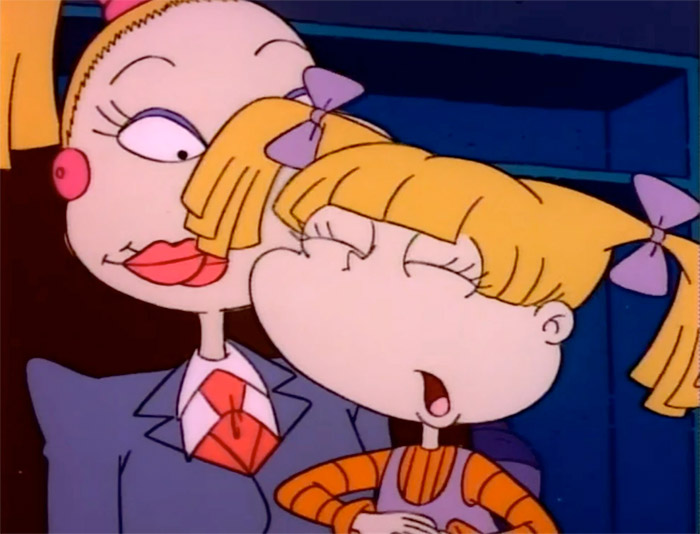
Angelica’s parents Charlotte and Drew, and her aunt and uncle Stu and Didi, try to help her become enthusiastic about the baby. Yet everything they say underlines how Angelica’s place in the family will change. Didi comments, “You’re going to get to…help out around the house,” which is meant as confidence in Angelica’s sense of responsibility. But all Angelica hears is, she’s going to become a maid. Didi also predicts, “Your mommy and daddy are going to be so busy feeding the baby and changing the baby and playing with the baby, they won’t have time for anything else!” The problem is, “anything else” includes Angelica.
Angelica figures Mommy and Daddy might be able to help. She approaches her dad first, asking what he’s doing and implying she wants to spend time with him. Distractedly, Drew tells her he’s busy, and mentions because of the new baby’s needs, “Mommy and I may have to give up a few things to make room.” Of course, he probably means extra expenses, but the things he mentions–food, clothes, and toys–are necessities. Angelica infers he means she will lose out on those things because of the baby. Perhaps this is why she goes to Charlotte and tells her, “Maybe we shouldn’t have a baby right now.” Angelica continues pressing the issue until Charlotte exclaims, “When the baby comes, it comes, and that’s all there is to it!” The fact that Charlotte yelled and said there was “nothing [she] can do,” communicates she wants the baby, but may not want Angelica. After all, Mommy doesn’t seem as determined to keep her first child close, or even around.
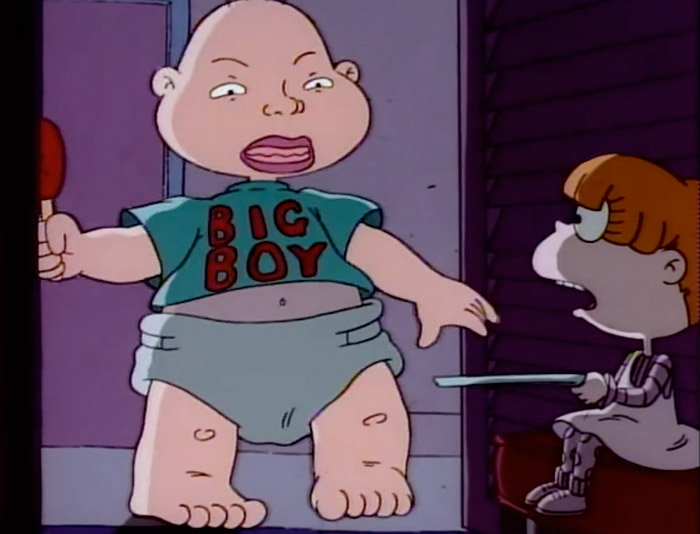
Angelica’s anxiety culminates in a horrifying nightmare wherein the new baby indeed comes and is moved into her room and given all her toys. Her parents banish her to the laundry room and become too busy to feed her. On top of this, the baby is able to walk and talk, and threatens Angelica constantly–“I’m the new baby and you’re the old baby…there ain’t room in this house for the both of us!” He constantly tries to grab or stomp on Angelica, who attempts escape from the house in her child-size car. As her nightmare ends, the baby picks up the car and aims it toward his gaping, drool-caked mouth.
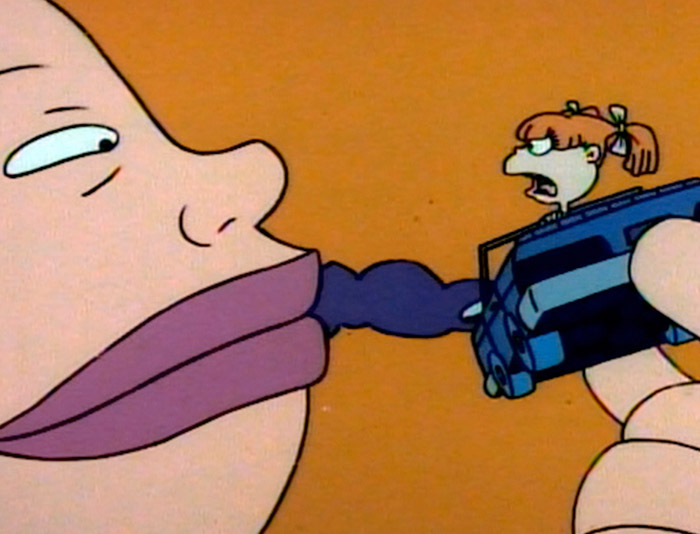
Angelica wakes shaking and screaming, “Where is he? Where’s the new baby?” When Drew tries to comfort her, she finally breaks down in tears. Drew immediately takes her in his arms and assures her, “You’re our first baby, and…we’ll always love you and take care of you. No one can ever take your place.” Some parts of Drew’s execution are a little clumsy; he calls Angelica’s fear “silly” and seems surprised that she was bothered. Considering Angelica bottled her emotions though, and considering she rarely gets a direct message of unconditional love, the lesson comes off well. Angelica may–in fact, will–remain a spoiled antagonist throughout the coming nine seasons. But in this and other instances, Angelica has learned her parents are trustworthy and a safe place. Moreover, no matter what bad things she does–and there are a lot–she will not lose their love or her special status as their first child.
Recess and Hey, Arnold!: Elementary Years
Babies and toddlers are fun to watch, as Rugrats proves. No matter how old we are, we can identify with them somewhat, because we were all babies once. Yet just as we were all babies, we all grew out of the preschool stage and became “big kids.” A huge part of that transition involved attending “real school” or “big school” at our local elementary campuses. There, we found many more classmates and playmates with diverse personalities and experiences. We found tougher, more complex problems. Looking back as adults, a lot of us can say we found the cornerstones of our childhoods, maybe lives, in the elementary years.
Recess: Tougher Than Jump Rope and Jacks
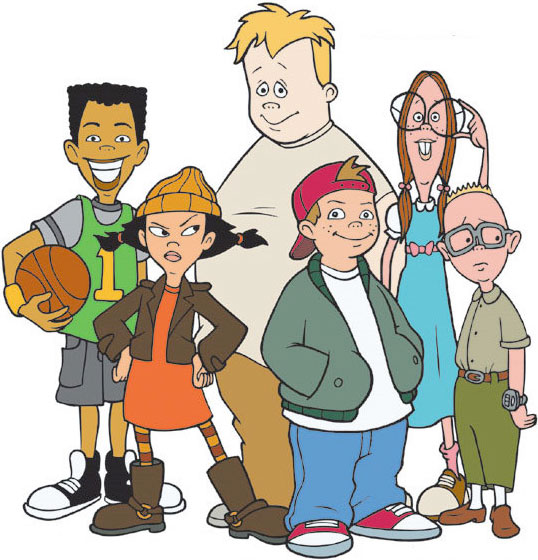
Once a child has learned to navigate small versions of large problems, he or she moves into the “elementary years.” The move can be literal, as in a transition from preschool to elementary school. It can be more figurative, as is the case with Nickelodeon and Disney cartoons. These progress from the imagination-fueled, somewhat dramatized problems of babyhood to the more down-to-earth problems of grade school years. Despite less melodrama and fewer misunderstandings about how the world works, imagination and creativity remain vital.
One might assume the natural progression from Rugrats would be All Grown Up. The latter is the former’s spin-off, and in it, the Rugrats gang is still in elementary school or early middle school. (The exceptions are Angelica and Susie, who are 13 and on the cusp of high school). However, a great case can be made for Disney’s Recess as a better, more nuanced, and truer-to-life follow-up. Created by Rugrats writer Paul Germain and partner Joe Ansolabehere, Recess premiered on Disney’s One Saturday Morning block in 1997 and became the most popular show in said block.
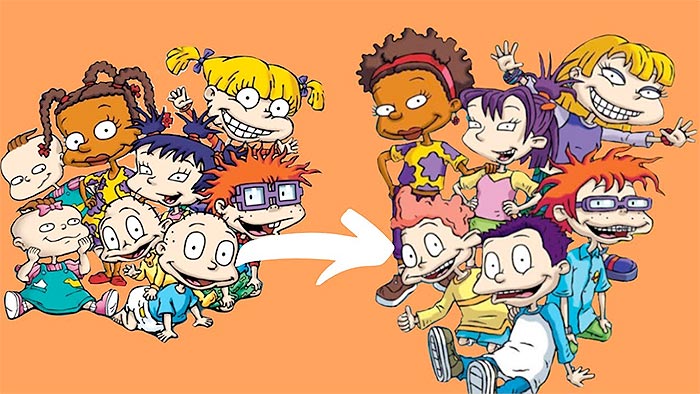
Austin Allison, writer for online magazine Collider, made this argument in a September 2021 article, calling Recess the true “spiritual successor” of Rugrats. Allison argues the aged-up cast of All Grown Up is too old and the time skip between series too big, for the Rugrats spirit to maintain integrity. The imagination, creativity, and somewhat unique culture of Rugrats disappears with All Grown Up. Suddenly, instead of “learning about some mundane aspect of suburban life” in fun, creative ways, the Rugrats gang becomes–well, mundane. Allison suggests viewers turn to Recess for a better look at what growing up means for real kids. Whereas the Rugrats gang ages into a teen show that is a dime a dozen these days, the Recess gang “navigates [its] way through the intense socioeconomic inner workings of kid society” (Allison 2021). These workings involve everything from “survival and oppression” to “literal class warfare” (Allison 2021). Allison notes that sometimes, the campus of Third Street School, a K-6 elementary school, could be read as a G-rated prison yard.
The World According to Six Unique Kids
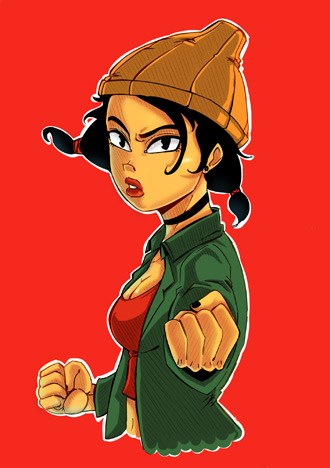
Austin Allison notes that where the Rugrats gang had to cope with “the world according to grown-ups,” Recess showed “kids coping with the world according to fellow kids, much like in real grade school” (Allison 2021). If viewers were going to see the world from that perspective, they needed three-dimensional kids through whom to do it. Recess gave us six, all with individual personalities, all of whom real kids could identify with in some way.
The Recess kids bear some resemblance to the Rugrats gang. They’re all in fourth grade, smack in the middle of the K-6 lineup. They’re old enough to understand much more complex concepts than the basics, but according to philosophers like Gardner and Piaget, not quite old enough for fully abstract thinking. They’re also not at all old enough to understand every adult motive, or the “big picture” of why something in their world might seem unfair. So, much like their toddler predecessors, the Third Street kids must navigate the world on their own terms.
In addition, the Recess cast has some traits that may overlap with Rugrats, although those traits are aged up and entirely their own. The main cast is as follows:
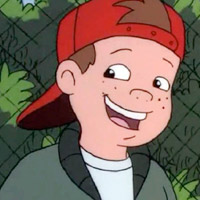
Theodore Jasper (T.J.) Detweiler: The fearless leader, much like Tommy Pickles.
Theodore masterminds the friends’ escapades, gets along great with his whole friend group, and is usually the “glue” holding up the friendship when it tries to crack.
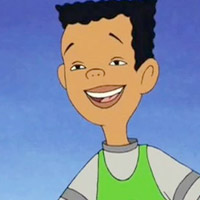
Vince LaSalle: Vince is T.J.’s best friend, a Black kid who loves all sports, but doesn’t fall into the stereotype of a Black athlete.
Besides his sportiness, Vince is also more circumspect than T.J., a bit like Chuckie. He can be T.J.’s voice of reason at times, and remains calm when the others might lose their tempers. Vince lacks Chuckie’s plethora of fears, but can be hesitant in new situations and lose confidence quickly.
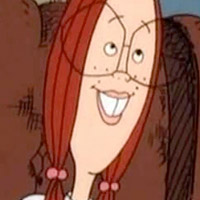
Gretchen Grundler: According to both teachers and students, Gretchen is the smartest kid in school.
She’s a bit stereotypical in her presentation. She wears glasses, talks as if with a perpetual cold, and is a fan of inserting huge words into everyday conversation. Gretchen mixes her smarts with social aptitude though, and her creativity often makes escapades go more smoothly. Because of her wisdom and loyalty to friends, Gretchen could read almost as a mentor, like Susie.
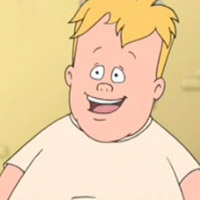
Mikey Blumberg: Mikey is the personification of “gentle giant.”
He’s both tall and big for his age, and is fairly often maligned for being a fat kid. He does enjoy his food, but is better known for his tenderhearted personality. Mikey loves singing, poetry, and dancing, including ballet. He tends to wax melodramatic if he thinks an innocent person or creature is experiencing injustice. Mikey, like Chuckie, can see the world as a scary place, but like Phil and Lil, maintains cheerful optimism.
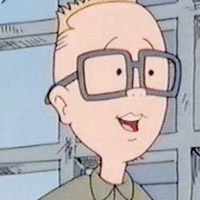
Gus Griswald: Gus is “the new kid” at Third Street and an audience surrogate for concepts viewers might not be familiar with.
He’s a military kid, and Third Street is his sixth school in as many years. He aches for deep friendship, which the other Recess kids give him in spades. He’s introverted, cautious, and shy, much like Chuckie. He can also read as a “hanger-on” to the others. But helping Gus navigate and enjoy Third Street gives the group a common goal.
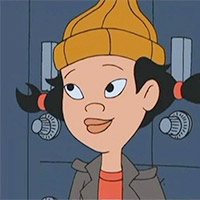
Ashley Spinelli: Last but certainly not least, Spinelli is small but mighty.
She insists on using her last name because “Ashley” is also the shared name of a popular, rich, fashion-obsessed fourth grade clique. Spinelli is a determined, scrappy tomboy who’s even more adventurous than T.J. and unafraid to solve problems with “Madame Fist.” Like Phil and Lil, she enjoys rough-and-tumble play and getting her hands dirty, and like Angelica, her temper can get the better of her. Unlike Angelica, Spinelli maintains intense love and respect for her friends.
Besides their unique personalities, what’s even better about the Third Street kids is their depth of character. Because they’re older than babies, they’ve had more time to develop interests other than core ones. In “Chez Vince,” for instance, the group learns their star athlete also loves to cook. “Dodgeball City” focuses on Gus’ latent talent for dodgeball, which he gave up after he accidentally hurt a little kid, but uses to defeat the fifth- and sixth-graders in a no-holds-barred tournament. And although Spinelli only enters the Little Miss Blush pageant because she was tricked, she triumphs in the “Beauty Pageant” episode. She knows there’s a lot more to being a girl than being conventionally pretty and saying what she’s expected to say, and this comes out in her “what I would do if I won” speech. The judges are impressed, Spinelli wins, and the Ashleys, who masterminded the trick, are properly horrified.
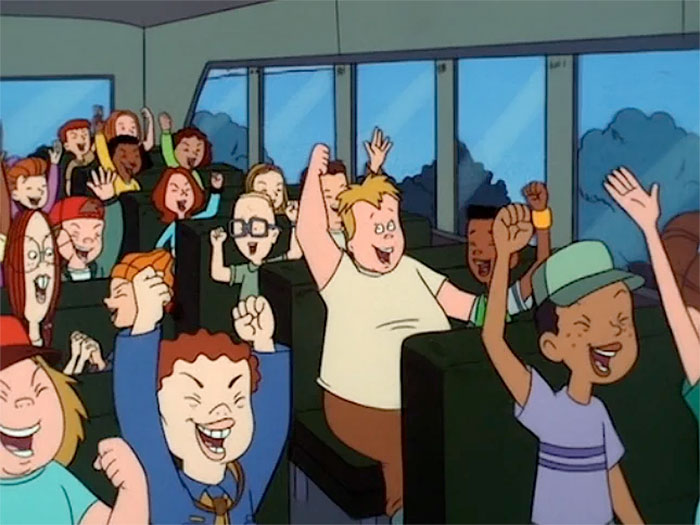
The kids also get to use their hidden depths together, benefiting the whole group and at times, the whole school. The best example comes from “Operation Field Trip.” The entire student body is going to one of the most popular museums in the area several hours away. The lead bus in their cadre is “Old Smokey,” an ancient vehicle bus driver Bertha has commandeered for years, and to which she’s quite attached. After this field trip, Old Smokey is destined for the junkyard, but she breaks down first in the middle of nowhere.
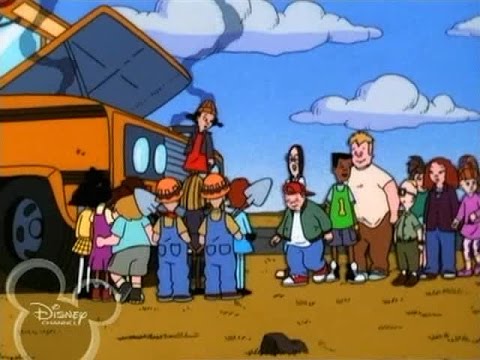
With no hope of a replacement bus coming in time to get the group to the museum, the Recess kids complain and gripe as any kids would. But then T.J. and Vince start exploring, and find several odds and ends that could stand in for essentials like a flywheel or exhaust pipe. Gretchen and Spinelli turn out to have learned a lot about auto repair, and they become the head mechanics of the operation. Soon, with the Recess gang’s class in the lead, Smokey’s entire passenger list is working to repair her. In the end, they do miss the field trip, but Old Smokey is in top condition. Bertha’s thrilled, and as T.J. puts it from his improvised “throne” on the bus roof, “THIS IS THE BEST FIELD TRIP EVER!” It’s definitely one Third Street School will remember, right down to the bus, which has become unforgettable thanks to its throne and new paint job.
Playground Politics
As Austin Allison wrote, Recess sets itself apart from Rugrats because the former focuses on kid relations rather than kid-to-adult interactions. In kid-to-adult interactions, one party has all the power, all the time, even though the “subjugated” party is cared for and loved. In the kid-to-kid interactions of Recess, power is equal or close to it. Also, because these children are still naturally selfish, resolutions that make everyone happy aren’t guaranteed. Thus, the kids aim for a structure and culture that does what’s good for the majority, but makes a place for everyone. For example, the cultural ideal may be treating everyone with respect and kindness. But the harsh reality of playground politics means coexistence or uneasy peace may happen. Nobody likes a bully or a snitch. But unlike in Rugrats, where bullies like Angelica were swiftly punished, Recess baddies like snitch Randall and bully Gelman can’t be avoided forever. The kids implicitly agree to live with these realities because they can’t control who comes in and out of their school, and because deep down, the “bad kids” are still kids. They have the right to enjoy the single 40 minutes of recess afforded them, same as anybody else.
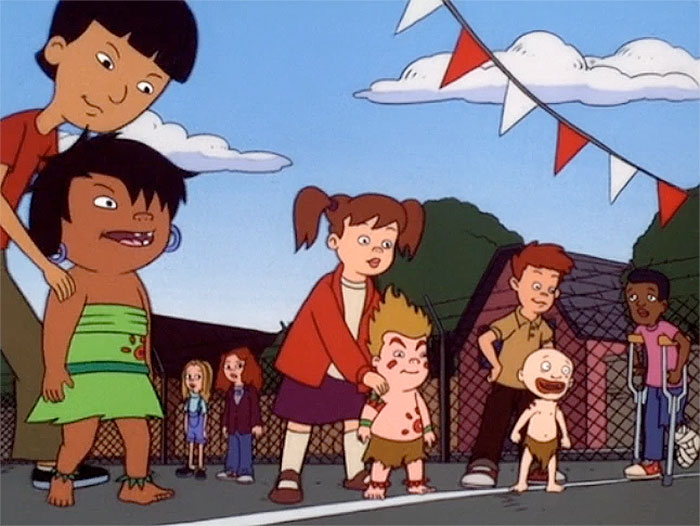
Of course, this doesn’t mean playground political structure can’t change. It can, and the kids learn some valuable lessons from it. Mikey shows viewers a great example in “Kindergarten Derby.” The titular event is an annual tradition where kindergartners, sponsored by older kids, race through an obstacle course. The winning kindergartner gets a wish granted by King Bob, the sixth grade monarch and benevolent dictator of the playground. The sponsor of the winner gets bragging rights and elementary school glory. The whole school has a stake in the event, and it’s seen as a celebration. But Mikey refuses to sponsor a kid, even though everyone else does, including his best friends.
Mikey explains his reticence with a touching flashback. When he was in kindergarten, he went down in infamy as the only kid not to finish the derby. His classmates and older kids mocked him for being slow, fat, and “pigeon-toed fat,” and Mikey has never overcome the humiliation. More importantly, he notes the derby dehumanizes kindergartners in other ways. They’re judged only on how fast they can run, and the older children examine them like horses. They check the kindergartners’ teeth, touch their legs, and sometimes use tools like blinders to ensure a particular kid will win. But no matter how many times Mikey points this out, no one will listen. His friends, who are usually on the side of kindness, note the Kindergarten Derby must go on because it’s tradition. They assume Mikey simply won’t let go of his bad experience.
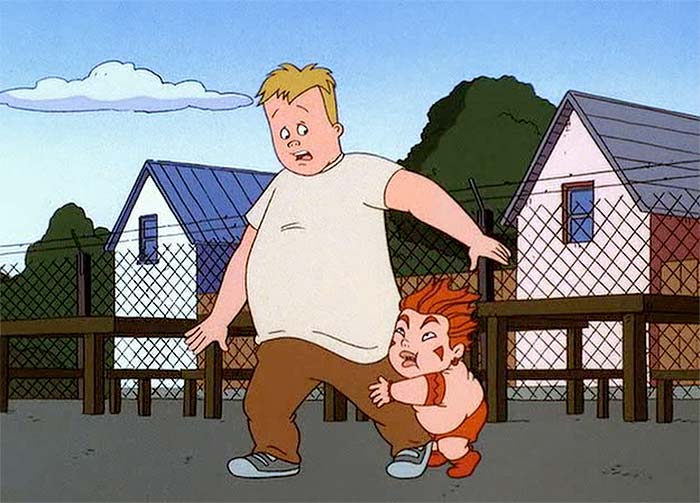
Mikey’s attitude changes when, despite his determination not to sponsor anyone, a kid picks him. Little Tubby is basically a modern, kindergarten version of our hero. “No one pick Tubby,” he laments in the truncated kindergarten language. Seeing his little pal’s determination, Mikey agrees to train him, emphasizing that finishing, not winning, is most important. What he didn’t count on is, because of his “big brother’s” support, Tubby begins to believe he can win. When Tubby triumphs thanks to the distractions of the obstacle course and an exhausted front-runner, everyone expects him to make a kindergarten-level wish. Instead, he declares, “Tubby wish there be no more Kindergarten Derby!” When King Bob uses the “tradition” protest, Tubby says, “That tradition bad. My big brother Mikey showed me that. All you big kids…don’t care what we want at all!” Seeing both the big and little kids support this idea, King Bob decrees, “The Kindergarten Derby is no more!”
“Kindergarten Derby” effortlessly meshes kid-size problems with adult-size concepts. On the surface, it looks like an episode about older kids exploiting younger ones, partially because they have the power to do it and partially because they were exploited when they were little. The straightforward solution is, craft an episode that simply teaches, “Don’t do this.” The Recess writers, however, took the lesson a lot further.
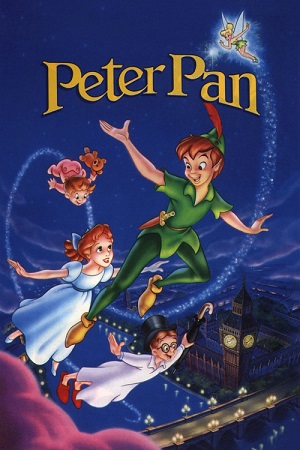
The problems with the Kindergarten Derby are more subtle than they look. The comparison between kindergartners and horses is obvious and dehumanizing enough. So too is the “tradition” of bullying kids who can’t keep up, whether because of weight, gait, or some other reason. However, “Kindergarten Derby” sets up the kindergartners as an uncivilized tribe, one step from animals, and the older kids as civilized. This in itself is extremely problematic; the parallels to Native American stereotypes a la Disney’s Peter Pan are rampant. But “Kindergarten Derby” is perhaps the only episode where we see an entire school dehumanize the one group that speaks and acts completely unlike themselves. Thus, Tubby and Mikey’s realization of “the system’s” flaws hits much harder. When the derby is abolished, they read not just as episodic heroes but needed revolutionaries.
Preserving the Integrity of Childhood
As preschoolers grow into elementary students, they become more aware of their childhoods. They craft childhood identities and friend groups, some of which are extremely close. Some situations in which these students find themselves threaten the integrity of these identities, although no malicious intent may exist. Elementary students may not know abstractly how precious childhood is. However, they know whatever and whoever is important to them, should not be discounted just because adults prioritize their own agendas. The Recess gang finds itself fighting to preserve childhood integrity on many occasions.
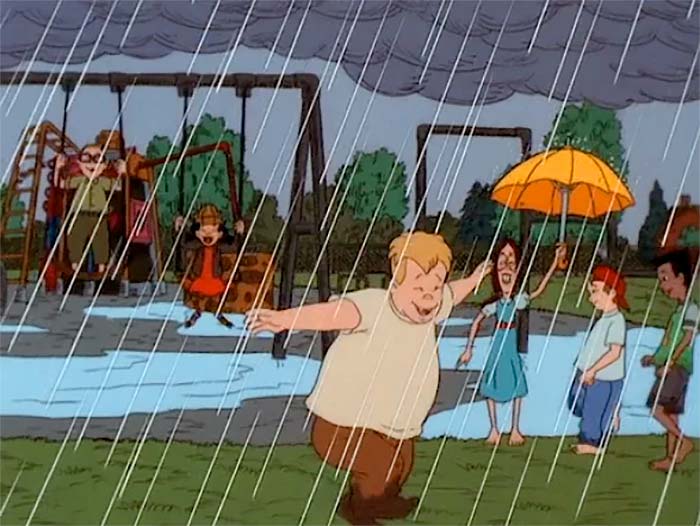
Viewers could argue the preservation arc occurs in almost all episodes. In “Rainy Days,” T.J. and friends fight to preserve their right to free time as they define it, rather than at a mind-numbing, adult-prescribed indoor recess. In “Schoolworld,” the gang learns the downside of ubiquitous technology, and goes on a mission to reclaim their school as they know it. Sometimes, their fight for integrity translates to standing up for each other, as in “My Fair Gretchen.” During that episode, the other Recess friends risk losing Gretchen to Oppenheimer Elementary. Knowing Gretchen doesn’t want to leave Third Street but is too nervous to stand up for her desires, the others vow to help her flunk her entrance exam on purpose. Though their plan doesn’t go off quite as it should, Gretchen does get to stay with her friends while maintaining her academic integrity (rather than dumbing herself down).
The best example of childhood integrity preservation though, occurs in “The Biggest Trouble Ever.” The eponymous trouble occurs when sixth grade bully Lawson sets up T.J. and by extension his friends, as the ringleader of a major prank. Said prank ends up destroying the school’s prize statue of founder Thaddeus T. Third. This causes such a community outcry, the Board of Education threatens to send all six kids to six separate schools.
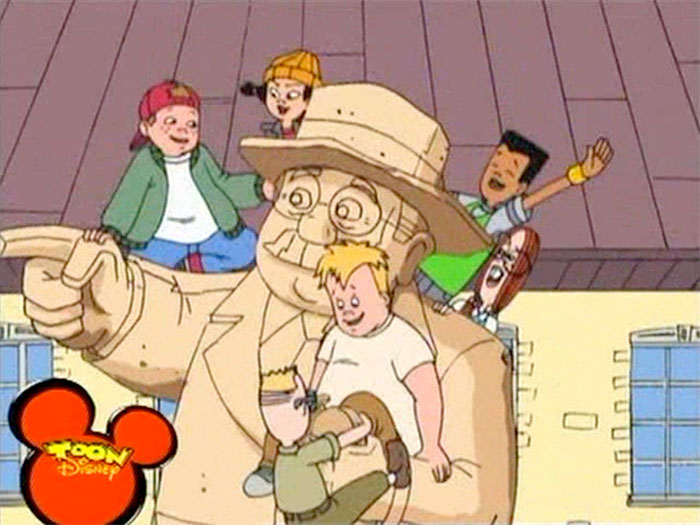
What follows is perhaps the scariest situation on Recess. Our characters are thrust into what TV Tropes calls a Kangaroo Court, where Mayor Fitzhugh “serves as judge and jury” (TV Tropes Recap). No one will let the kids speak, and when Miss Finster and Principal Prickly try to advocate for them, they are shut down. Mayor Fitzhugh, who’s normally buffoonish, becomes a truly threatening villain. TV Tropes’ recap of the episode describes him as [“taking] sadistic pleasure in punishing six defenseless nine-year-olds for breaking something by accident and who were genuinely sorry for it” (TV Tropes Recap). While it might not seem possible, the situation deteriorates further when audiences learn Fitzhugh himself tried to intentionally break the statue when he was a kid and got away with it. Yet, Fitzhugh and the Board of Education are still determined to punish the Recess kids, up to building a juvenile prison to house them exclusively.
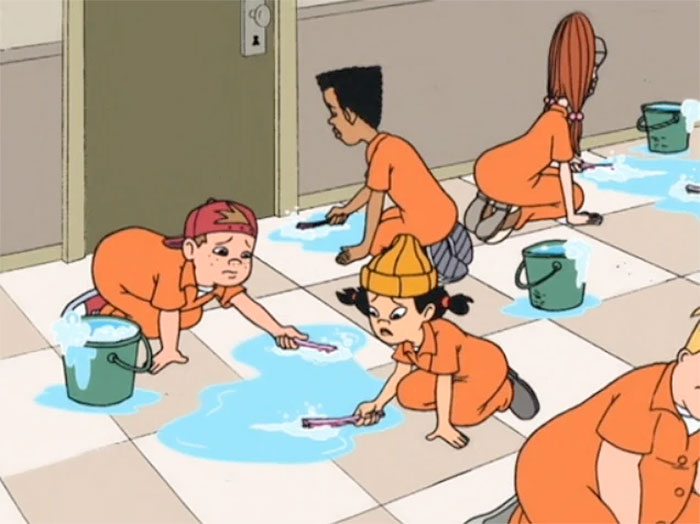
It is not until Thaddeus T. Third V, the school founder’s grandson, makes an appearance that the tide turns in the kids’ favor. Third V basically shuts down the entire proceeding with a rousing speech and a bunch of old photos, including one that proves Fitzhugh planned to intentionally wreck the statue. Viewers could argue then, that the Recess kids were saved by an adult, which blows a hole in their show’s kid-power premise. Actually though, the episode’s happy ending happened because kids and adults realized, together, that they have all experienced childhood. They realize together how sacred this time is, and what can happen when petty attitudes and overblown rules threaten it. Namely, basic values that adults develop as kids–values such as kindness, loyalty, fun, and creativity–go out the window. “The Biggest Trouble Ever,” then, solidifies the most important elementary years concepts for viewers of all ages.
Hey Arnold!: Hey, Let’s Go Deeper
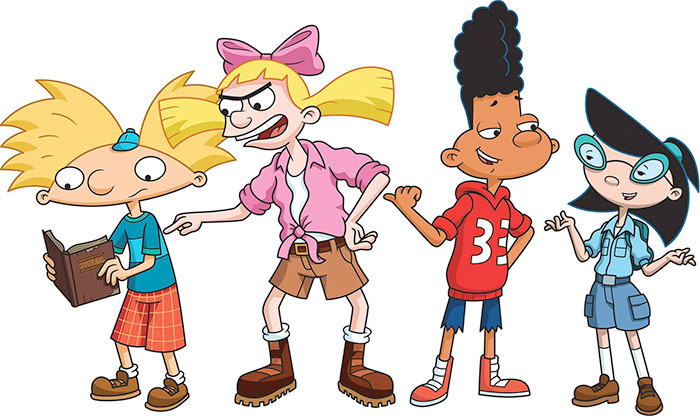
Recess doesn’t have a spiritual successor as such, but it does have a spiritual contemporary at Nickelodeon, which can be read as a parent or sister company to Recess producer Disney. That successor is Hey Arnold, a Nicktoon that ran from 1997 to 2004, producing five seasons and just over 100 episodes. The stories are based around Arnold, a fourth-grader growing up in an inner city boardinghouse with his grandparents and an eclectic cast of adult boarders. Like the other protagonists we’ve discussed, Arnold spends most of his time hanging out with an equally eclectic friend group and navigating elementary-age problems.
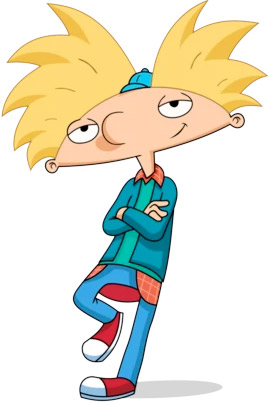
However, Hey Arnold goes much deeper than Rugrats or Recess, as far as exploring issues and how kids handle them. Arnold’s environment reads “tougher” than the other two. This is partially because he lives in the inner city, but also because of Arnold’s personal situation. His medical missionary parents left him with Grandma and Grandpa when he was a baby; their plane went down and was never found. Thus, Arnold has no closure as to what really happened. In addition, Arnold and his friends tend to encounter bigger problems and more serious situations than their predecessors. Arnold’s friends often turn to him for help with these, since he has a better-developed moral compass and sense of long-range consequences than most kids his age. Arnold, then, becomes a good example of what happens as elementary kids transition into their “upper elementary” years. They’re still kids. They still maintain some needed innocence. When they’re exposed to “grown-up” issues, it’s ideally with a lightened or perhaps humorous touch. Yet, upper elementary kids are ready to grapple with more and bigger concepts. On Hey Arnold, they do it quite well.
“Does This Remind You of Anything?”
The above question is the name of a trope often used in Hey Arnold. Does This Remind You of Anything (DTRYA) occurs when a storyline has a light and humorous overtone, or scales down a complex concept for innocent audiences. Yet below the surface, older and savvier viewers can tell the characters and show writers are representing something else. The trope pops up in a number of Hey, Arnold episodes, spawning deep discussions among viewers on forums like YouTube, Reddit, and general social media.
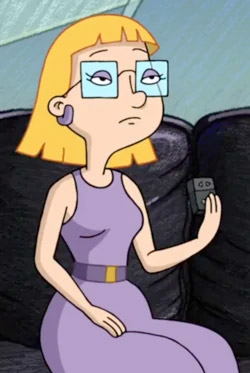
Some instances of DTRYA occur across episodes and don’t reach their pinnacle until a viewer has watched several episodes or seasons. A great example is Miriam Pataki, antagonist and anti-hero Helga’s mother. Miriam is constantly seen drinking “smoothies” and speaking in a tired or slurred tone. On the surface, this indicates “tired, overworked mom,” which is likely what the target audience would see. But Miriam relies on her “smoothies” so much, and seems so out of it, that she reads as an alcoholic. She also gives viewers other clues to her problem; in one episode, it’s mentioned her driver’s license was suspended–again. In another episode, she’s said to be completing community service. Craig Bartlett confirmed the alcoholic theory while the show was still in production, and viewers have noted it gives a lot of adult nuance to not just Miriam, but Helga.
Other instances of DTRYA occur primarily in one episode, or as the culmination of a character arc. Again, these are handled with a kid-friendly touch, but some of these examples are unsettling. One could argue such examples are disturbing, or touching on a level that could shake up viewers expecting an innocent half hour of animation.
Perhaps the best example of this is “Chocolate Boy.” This fifth season episode focuses on a character who has appeared in several episodes, but has never been named or given a storyline. He’s defined by his addiction to chocolate, an addiction so serious that he will, for instance, sneak onto a field trip to the chocolate factory. As Arnold notes when this happens, “He’s not even in our grade.” This doesn’t deter Chocolate Boy in the least; he ends up diving into a vat of chocolate in nothing but his skivvies, and spends the ride home licking himself.
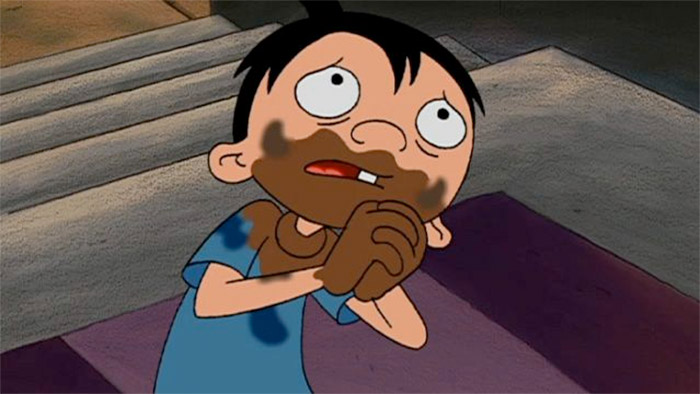
The field trip incident, as well as Chocolate Boy’s other addictive incidents, are played for laughs. But in “Chocolate Boy,” the character arc takes a darker turn. Fifth grade bully Wolfgang promises Chocolate Boy he will give him a ten-pound bag of the sweet stuff–if Chocolate Boy will go “off” chocolate for two weeks. Wolfgang sends his toady Mickey to “tail” Chocolate Boy, who instantly becomes desperate to the point of shaking and having bloodshot eyes. In the deep throes of “withdrawal,” Chocolate Boy begs Arnold to help him. He lets Arnold believe he is done with chocolate for good.
Arnold puts Chocolate Boy through his paces in a montage that reads a lot like kid-friendly detox. Arnold’s measures include scare tactics–a video that shows kids with major cavities and acne, and even in prison (presumably, these kids were desperate enough to steal chocolate). Arnold also uses a sauna to “sweat all the chocolate out,” carob (which Chocolate Boy is allergic to), and other food substitutes. Funny results ensue, such as flames shooting from Chocolate Boy’s ears when he tries subbing peppers for chocolate. But the fact the addiction remains entrenched keeps the overall tone serious.
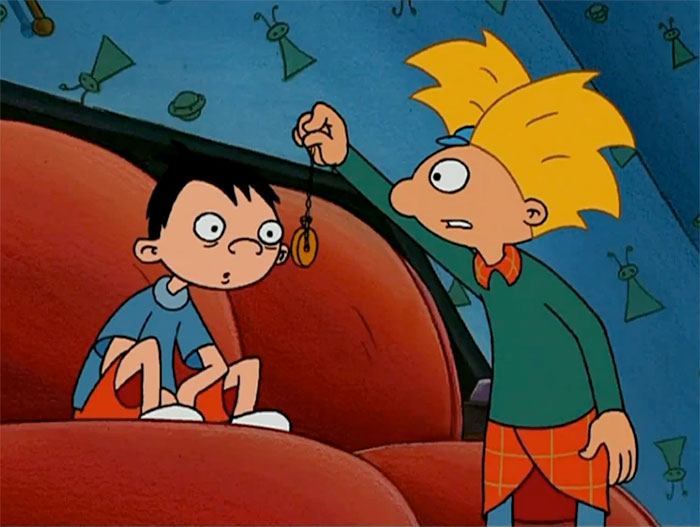
Finally, Arnold tries hypnotism, which is where the episode goes from serious and disturbing to potentially wrenching. When asked to recall his earliest experiences with chocolate, Chocolate Boy recalls his Nanny. “She took care of me real good…she gave me chocolate,” he says, with a fond look in his eyes that indicates the two were close. “But then one day, I came home from preschool and she was leaving,” he continues. “She said, ‘Goodbye. Be good and be happy.’ And then she left…and I went up to my room and ate…a lot of chocolate.” The animation shows Nanny simply disappearing with a suitcase into a fog, much the way a preschooler might remember such an incident.
“You eat chocolate…because you miss your Nanny,” Arnold astutely observes. Chocolate Boy breaks down, sobbing piteously for several seconds–“I miss my Nanny,” over and over. It’s a gut punch especially for older viewers, who realize a young child was given no real closure in saying goodbye to a beloved adult, nor a real reason for her departure. The viewers may have had similar experiences and, while they may not have spiraled into addiction, can empathize with the little chocolate addict. Some viewers may also be touched because they see the connection between Chocolate Boy and Arnold. Both boys have lost parents or parental figures with no warning, no closure, and no “good” reason. In fact, viewers and subconsciously the boys, probably recognize there is never a “good” reason for this type of trauma. Nor is the trauma easily healed. As Arnold demonstrates for Chocolate Boy, sometimes the best answer involves having a trusted person nearby to help you deal with the truth.
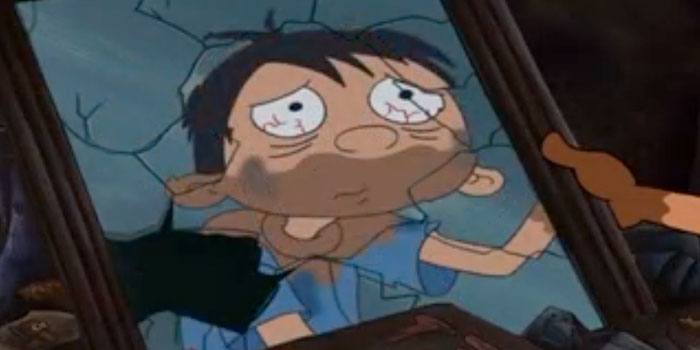
“Eating chocolate is not going to bring [Nanny] back,” Arnold tells Chocolate Boy, who acknowledges he knows this. He also acknowledges that with his addiction, he’s not being good and is not happy. He determines to honor Nanny and be happy, which means giving up chocolate. For the short remainder of the series, viewers indeed never see him indulging again. The episode circles back to a comedic resolution; we learn Chocolate Boy is now perhaps a little too fond of radishes. Yet the comedy doesn’t take away from the realistic, kid-friendly handling of addiction. The goal is not to “scare viewers straight” or preach about addiction in itself. The goal, instead, is to show how unhappy people sometimes turn to unhealthy outlets. When this happens, they need compassion. And while kids are in no way ready to deal with the real world versions of problems like addiction, episodes like “Chocolate Boy” can teach them to respond more gently and mindfully than they might have before.
Basic Characters, Nuanced Conflicts
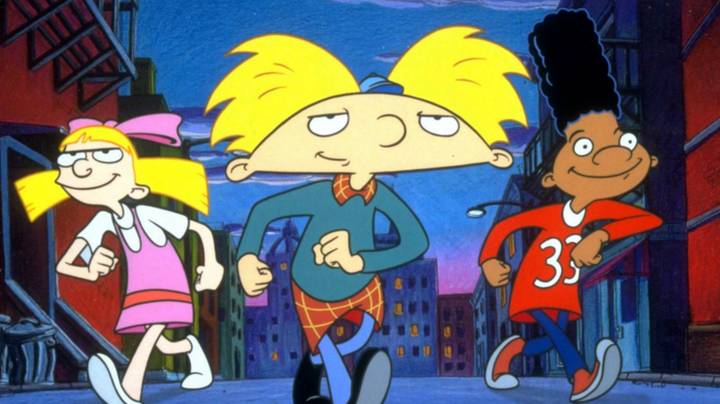
Like Recess, Hey Arnold’s characters have multifaceted personalities hidden under basic characterizations. While much less adventurous and prone to troublemaking than his Recess counterpart, Arnold acts a bit like the T.J. Detweiler of his friend group. He’s what Craig Bartlett once called “the more low-key character” among kids whose major traits are played up to make absolutely clear who they are. Unlike T.J. though, Arnold is not a team leader. He’s more the center of a multi-spoke wheel. He “turns” with the group and interacts with individuals or small groups in each episode. As with Chocolate Boy, Arnold’s interactions show kid viewers how friendships and relationships evolve as they get older. An elementary student may well know a classmate as “the smart kid” or “the fat kid” or “that guy with the backwards hat or basketball jersey.” But actually getting to know those kids brings up many more depths.
Harold Berman: Fat With Non-Food Troubles
One of the classmates Arnold helps, and uncovers depths in, most often is Harold Berman. In Hey Arnold’s earliest episodes, Harold was written as “a slob and a bully,” as other kids put it. He challenged Arnold to a fight after Helga goaded him, and made fun of Arnold and all his other classmates to the point they wouldn’t socialize with him. “Why do I always gotta be so mean,” Harold wonders to himself in a season two episode. Yet, self-awareness doesn’t mean Harold’s interactions or attempts at personal growth are always successful.

A lot of Harold’s troubles come from the fact that he fits a label. He’s not just a small-time bully, but also “the fat kid.” Unlike Mikey Blumberg, Harold is not readily accepted into a friend group despite his weight. If anything, Harold’s weight is the ammunition other kids use against him because they can’t safely taunt him for other things, like being held back in school. Harold’s classmates know if they do this, they’re likely to get beaten up.
Unfortunately, Harold’s weight and reputation hide a lot of the depths Arnold helps him uncover. For instance, Harold is Jewish, making him one of Nickelodeon’s only animated characters with defined religious heritage. This heritage comes up at least twice, when Arnold helps Harold prepare for a bar mitzvah and again when he helps Harold discover his calling as a butcher. (The latter had stolen a ham that looked too succulent to pass up, even for a kosher-keeping kid, from the local shop. As punishment, he was required to work off the debt and ended up loving the environment). The episode “Harold’s Kitty” shows us Harold also has the capacity to be kind and loving, at least toward animals, and particularly likes cats. Other episodes show us Harold is a talented arm-wrestler and is able to do well in school if, as teacher Mr. Simmons says, he “[believes] in [himself.”] But for the most part, Harold is known for being “the fat kid.”
Arnold observes the consequences of Harold’s label in “Weighing Harold” from season four. Arnold is a bystander when Harold wins a bet with classmates Sid and Stinky that he can eat 50 Mr. Fudgy ice cream bars. After the fact, Harold overhears Sid, Stinky, and other kids excluding Arnold, laughing about his weight. “I bet by the time he’s in the sixth grade, he’ll weigh over 300 pounds,” Sid guffaws. The other kids add what an idiot and slob Harold is for spending all his money on ice cream.
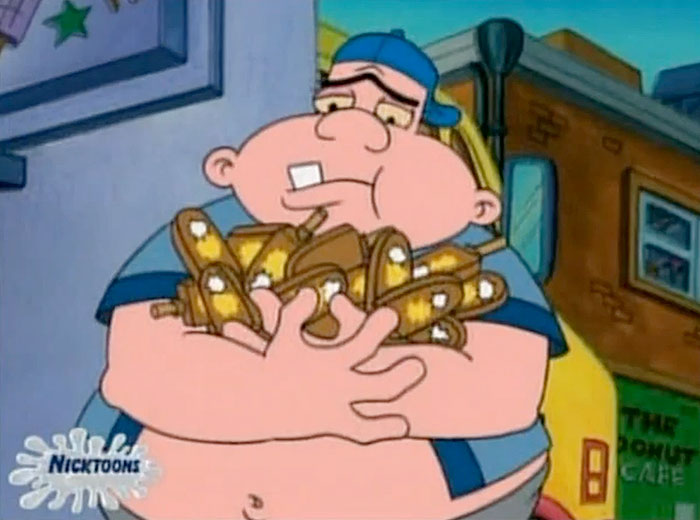
Harold doesn’t call on Arnold for help right away. After seeing a TV ad for a kid-centered weight loss cruise, he determines to go and lose weight. Notably, although a lot of Harold’s classmates show up to see him off, Arnold is the only one to wish him luck. “I know you can do it,” he adds. But when Harold returns, he’s actually gained weight, to the point of looking at his reflection in the harbor and asking, “Who’s that guy?” Harold holes up in his room and refuses to come out in the daylight. When Arnold offers to help him lose weight, he scoffs, “I can barely lift my arms! I’m fat and I’m always gonna be fat!”
To Harold’s credit, he tries to work out with Arnold. However, the exertion and frustration prove too much, and Harold breaks down crying. He relates several small incidents where others, not just Sid and Stinky, called him fat. For instance, the ice cream man always calls Harold “Tubby” and says he’s a retirement ticket; a strange child pointed and called Harold a “fat man.” “No Johnny, he’s a fat boy,” the kid’s mom corrected. In other words, everywhere he went, Harold heard the message, “You are fat, and it defines you.”
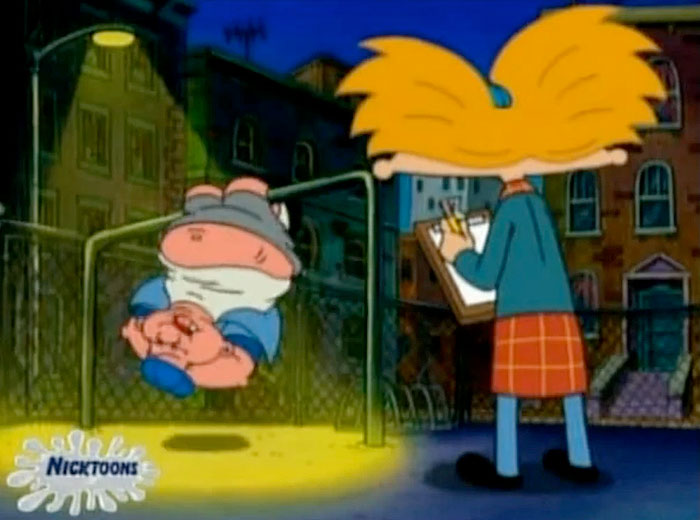
“So I went on a cruise to get skinny,” Harold laments to Arnold. “But I was so worried about people thinking I was fat that I ate more and more! And then I got really fat…and now I’m just a big, giant fat freak!” Arnold is shocked and appalled, but not at his friend–at the people who treated him poorly and convinced him he could only be fat.
Arnold never denies Harold is fat or needs to lose weight. Yet his reaction to Harold is a hard-hitting lesson for viewers, kid and adult, in empathy. “Did you think you were fat?” he asks Harold. “I liked the way I was,” Harold says, indicating he was happy and perhaps healthy before people started making a big deal out of his body. With this in mind, Arnold suggests Harold stop trying to get skinny and try to get back to his old weight. He might still be big, but he’ll be satisfied with himself and at a healthier size regardless. Arnold also suggests the two work out at night, where no one can see them and make comments.
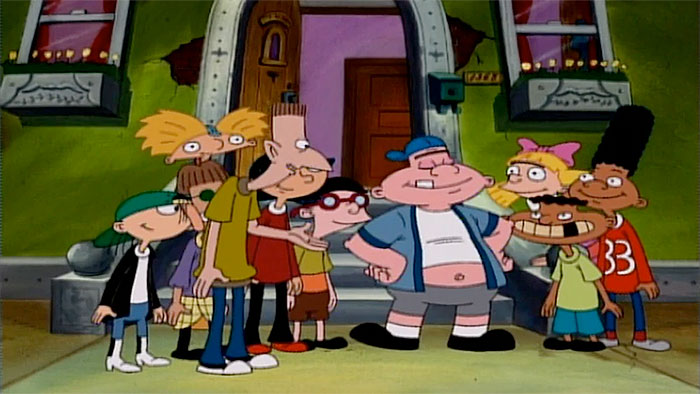
Harold’s story ends well, in that he does get back to his old weight and gains social acceptance. More importantly though, Harold’s story, and time with Arnold, have a great ending because of the depths they plumb about obesity. Harold is a great example of a person who might be heavy, but has committed to weight loss only because other people told them to. He’s also a cautionary tale of how not to approach body size. Like Harold, people who try to eat right and exercise, of any age, still get made fun of. Kids and adults are likely to remark on how pathetic a heavy person’s efforts are, or call them “disgusting” as Harold and Arnold’s classmate Rhonda does. Harold finds happiness at the size that works for him with help from Arnold, who did not participate in body-shaming. Their interactions challenge kids and adults not only to stop body-shaming, but to look beyond the stereotypes we might have of certain types of people. This “looking beyond” must happen for everyone, including those like Harold, who push people away out of fear. When it does, people like Harold can show us deeper, more nuanced parts of themselves, and all parties will benefit.
Phoebe Hyerdahl: Smart and Suffering
Sometimes, Arnold’s attempts to help others don’t end as well as they could. However, Arnold’s less than successful encounters with his classmates are never failures, and they have a lot to teach Arnold, his fellow kids, and real-life viewers. Phoebe Hyerdahl is a great example of what happens when Arnold “fails,” yet learns something from someone else, and helps them learn, too.
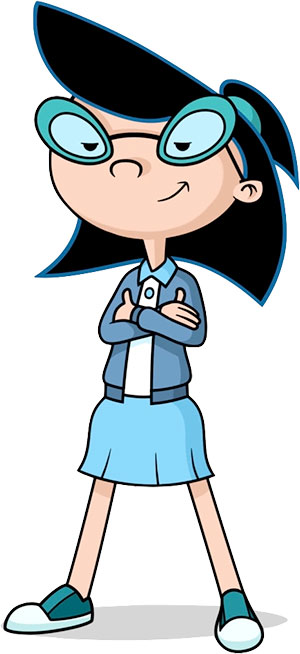
Phoebe, like Harold, fits a generic, easy label. Where Harold is “the fat kid” or a “slob and a bully,” Phoebe is “the smart kid.” One episode in season four has her skipping two grades, going from fourth to sixth overnight. Like contemporary Gretchen Grundler, Phoebe is well-versed in every school subject, loves learning, and sprinkles her conversation with huge words because to her, those words aren’t intimidating. Like Harold, Phoebe also has a deeper heritage than most animated characters. She’s half-Japanese, and that informs a lot of who she is. Phoebe’s appearance is mostly Asian like her father, Kyo’s, although she has white skin and rounder eyes like her Caucasian mother Reba. Phoebe is accomplished at Japanese-style fencing and speaks the language fluently as well.
In addition to being “the smart kid,” Phoebe is also a nice kid–maybe too nice. She considers Helga Pataki her best friend, but she’s seen fetching, carrying, and writing things for Helga more than spending time with her. Helga almost never treats Phoebe as an equal, and although she’ll demand Phoebe’s advice, she rarely takes it. Helga demands unquestioning loyalty from Phoebe but never gives any back.
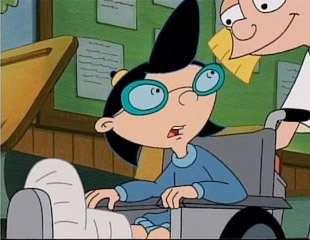
Arnold finds himself observing this dynamic a few times throughout the show. However, he doesn’t speak up about it until season five’s “Phoebe Breaks a Leg.” Phoebe gets the indicated injury after stepping in front of a bus she never saw because Helga’s laundry and doughnuts, which she’d been ordered to retrieve, were obstructing her view. In signature melodramatic fashion, a guilt-ridden Helga vows to make this up to Phoebe. She goes completely overboard, down to making Phoebe’s lunch and shampooing her hair in the school water fountain.
Phoebe has always been introverted and passive-aggressive, so she denies enjoying the role reversal. But that passive-aggressive side gets the better of Phoebe when the doctor announces she can get her cast off. Fearing she’ll be Helga’s servant again, Phoebe rigs a hinge in her cast so she can fake her injury a little longer. Arnold confronts Phoebe after seeing her slip behind a library shelf to scratch an itch, which means taking off the cast and putting it back on.
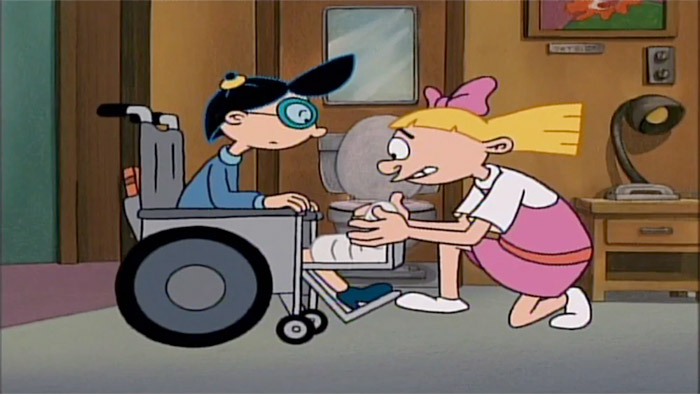
Phoebe is instantly defensive, even lying about faking her injury. Yet Arnold is too insightful for her, no matter how smart she is. “This doesn’t…have anything to do with Helga? The way she treats you,” he asks. The question indicates Arnold has empathy for Phoebe, although he thinks her way of dealing with the situation is wrong. But Phoebe isn’t ready to face the truth. The closest she comes is confessing while denying–“Just because I’m constantly doing errands for Helga and got injured in [a] bus accident that was essentially her fault, it doesn’t mean I would prolong my injury!”
Phoebe never outright admits what she did, which might indicate Arnold failed in helping her. But when Helga gets almost the exact same injury as Phoebe–from “serving” her–Phoebe tells her friend how she feels about the inequalities in their friendship. Helga says she understands, and her request for Phoebe to snag her a fruit cup is played for laughs.
Thus, viewers could read Arnold’s plumbing of Phoebe’s depths as a failure because her situation doesn’t get “better” permanently. There is another layer to Phoebe’s story, though. She’s more a cautionary tale than Harold; her actions tell viewers how not to handle inequality or other injustices, especially with friends and loved ones. If nothing else, Phoebe has learned a kid-friendly lesson in codependency, and how being on either side of it hurts both parties. In so doing, she may be on her way to suffering less, and becoming smarter in a way that matters more than academics.
Arnold and the Anti-Heroine
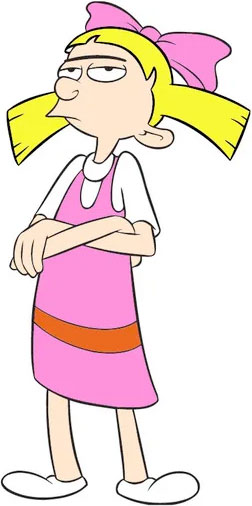
Finally, Hey Arnold asks upper elementary audiences, and perhaps others, to do something they might never have before. More than its predecessors, Hey Arnold asks us to go deep and empathize, if not always sympathize, with an antagonist. Of course, Rugrats and Recess did this a bit. Angelica certainly had her sympathy-inducing moments, as we discussed. Recess bullies sometimes reformed temporarily. Failing that, antagonistic forces such as teachers and principals showed they had softer sides. But until Hey Arnold, no antagonists were analyzed deeply or given anti-hero or heroine storylines. That changed with Helga G. Pataki.
In early seasons, Helga was characterized as Arnold’s bully, “who’s also in love with him,” according to a 1996 feature-ette. Helga doesn’t bully Arnold to the extent viewers might expect in the 2020s, or even early 2000s. She doesn’t wage a cyber war on Arnold, steal his things, or publicly humiliate him in the cringe-worthy ways today’s bullies might. She’s more apt to shoot spitballs at Arnold and deny it, spill paint on him and tell the teacher it was because Arnold started a fight, trip him, or call him Football Head. And as soon as Arnold walks away in disgust, Helga will rush off alone and pull out a locket with his picture inside. She’ll then wax eloquent about how much she loves him–“Oh, Arnold, my love, if only you knew how I truly feel about you,” and the like. She laments her habit of treating him badly, but can’t stop lest any of the other kids find out. In fact, her monologues always end with her punching out Brainy, who is somehow always standing behind Helga, breathing nasally, while she extols Arnold.
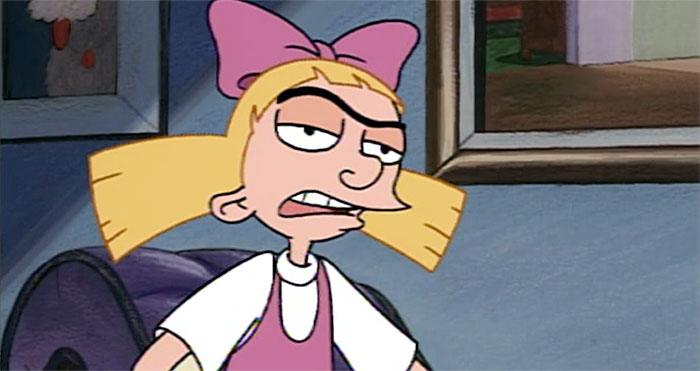
In fact, Helga’s greatest fear revolves around anyone finding out the truth of her love for Arnold. It turns out she’s not just Arnold’s bully. She doesn’t pick on anyone else in particular, but she’s a tough, pugnacious, bad-tempered person. Her sense of humor is usually biting and cruel, which gets her into trouble on at least two occasions. One such occasion almost got Helga beaten up, and another caused her to temporarily lose any positive associations with most of the kids in class. Yet Helga doesn’t change her ways when these things happen, at least not for long. She takes a little pride in being tough, and uses it as a protective shell.
Inside Helga’s Head
If Helga’s characterization stopped here, we could call her another typical animation antagonist. We’d likely say that while her love for Arnold is unique, it doesn’t save her from being a stereotypical bully with a flimsy excuse for her behavior. The show’s writers and creators must’ve known this, though. They use several episodes to probe Helga’s relationships with others, from her parents to her older sister Olga and best friend Phoebe. These episodes highlight that, though Helga tries hard, she can’t help relating in dysfunctional ways. For instance, she wants to be Phoebe’s friend but usually treats her as a subordinate or a quite literal servant. She would like to be treated as a valued daughter, but retreats behind her shell because her parents have already lavished most of their love and energy on Olga.
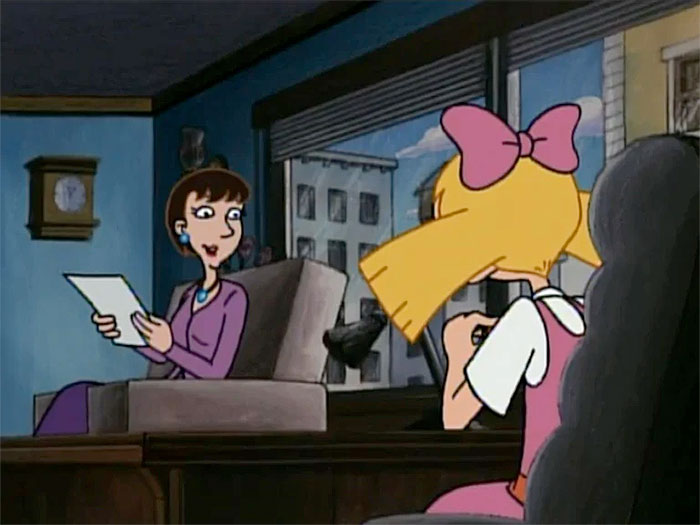
Viewers don’t learn what this has to do with Arnold until the late special “Helga On the Couch.” Therein, P.S. 118 gets a new school psychologist, Dr. Bliss. Although Principal Wartz assures Bliss the school is “the picture of mental health,” Bliss is intrigued when she sees Helga stomping down the hallways insulting people the moment the doctor steps from the office. Bliss spends the rest of the day observing Helga, noting she seems particularly angry toward Arnold and spends a lot of time focusing on him. She requires Helga to come in for her first bi-weekly session after seeing the latter sock Brainy–again.
Helga’s parents warn her not to “blab to the school shrink,” and that “Patakis…sweep things under the rug.” Helga presumably agrees, perhaps because a deep conversation with the psychologist might reveal Mom’s alcoholism, Dad’s “blowhard” nature, and her parents’ general neglect. This would be a more than justifiable reason for Helga to be placed in foster care. Helga never voices these fears to anyone else, but they are apparent to viewers who know Helga well. Viewers who haven’t encountered Helga before would probably understand the Patakis’ reactions because frankly, Helga’s parents have reason to worry if the school psychologist decides they are part of Helga’s problems.
Helga stays sarcastic and closed off at first. She accuses Dr. Bliss of trying to butter her up after Bliss compliments her taste in art and jumps rope with her. “You think if you hang out with me and tell me about yourself, I’m gonna…say anything you want. Not gonna happen,” Helga declares. But like a lot of people who need help, Helga can’t help dropping hints throughout the session. For instance, when Dr. Bliss mentions how her sister once broke an item the two fought over, Helga says, “You think that’s annoying? Try having a sister who’s perfect.”

Helga flashes back to several incidents viewers have never known existed. Some of these are played for laughs, like when she vents about Olga’s perfection and compares her to the star of a corny 1950s sitcom. Others are downright heart-wrenching. Helga tells Dr. Bliss no one notices her, and relates an incident where she needed to get to preschool. We see little Helga tugging on her dad’s leg, asking, “Who’s gonna take me to preschool?” But Mom and Dad ignore her and focus on Olga playing the piano. “Yeah, yeah, in a minute, Olga,” Dad says. “No, I’m Helga, Dad. Helga!” the little girl protests. This gets her nowhere. The next thing we see is a toddler, walking to preschool alone, passing a rough neighborhood and having a dog steal her lunchbox. It’s raining, and Helga gets splattered with mud. With that start to her day, it’s no wonder she stomps into preschool, knocks over a block tower, and jumps on Harold so hard he pukes. “I’m the boss around here, got it?” she demands. Everyone gives her wide-eyed nods.
Love and Hope for Helga
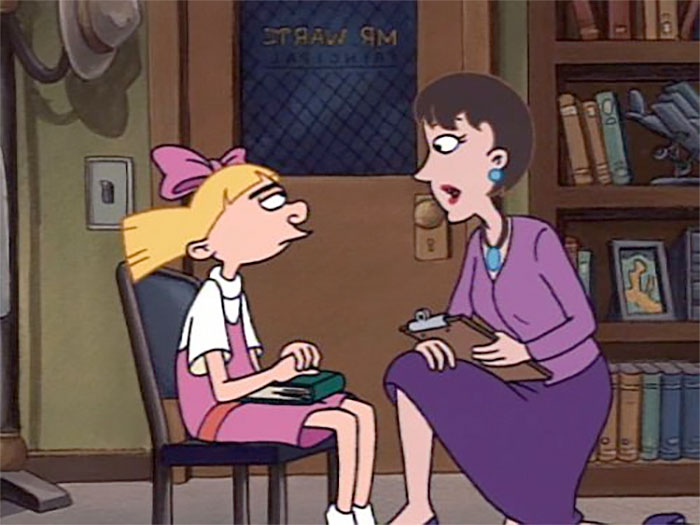
“So nobody’s ever noticed you,” Dr. Bliss intones when Helga’s finished with her story. Helga, who has also gone quiet and thoughtful, says, “There was someone.” We then flash back to preschool, where Helga meets Arnold. “Hi, nice bow. I like [it] ’cause it’s pink like your pants,” Arnold says, sharing his umbrella. Helga is instantly smitten. Her love grows later when Harold swipes her snack and Arnold immediately offers, “Want mine?” They end up sharing, and Helga gets the message, not only does this person like her, he cares about her well-being. He notices good things about her, he speaks kindly, and he was worried she might be upset or hungry. It’s no wonder Helga hides behind a garbage can, clutching a Valentine card with Arnold’s picture on it, to say, “I love you, Arnold, and I wanna marry you.” Unfortunately, Brainy was eavesdropping, and got socked in the nose.
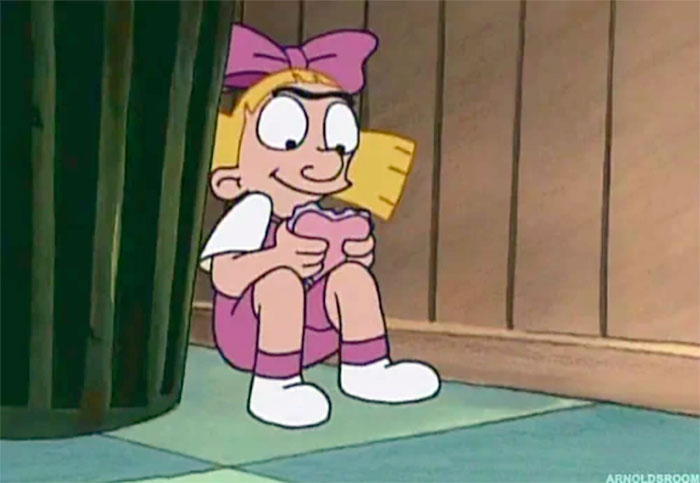
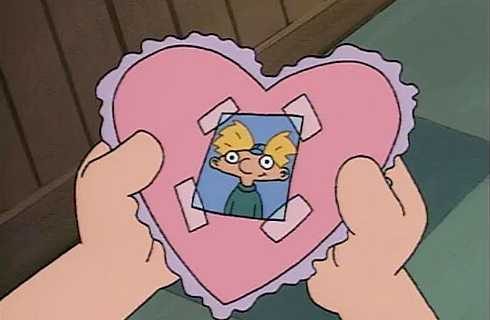
“I just wanted to get a minute alone,” Helga says when Dr. Bliss presumably asks her why she hit Brainy. “And why did you want that minute alone?” Dr. Bliss asks. Helga starts to shut down again, but Dr. Bliss coaches her, “If you feel like getting something off your chest…now might be a pretty good time to do it.” Helga stares down perhaps the hardest choice she’s made in her life. Does she tell Dr. Bliss the truth and risk being thought of as crazy, thus cementing her deep insecurities? Or does she keep her secret and go on like she has, possibly getting herself labeled a problem child or worse?
“Well, I…I…I LOVE ARNOLD!” Helga finally bursts out. “I’m absolutely, positively in love with the boy! I wanna grow up and sail around the world with him…coffee in Paris, roses, sailboats, the whole nine yards!” She continues exulting while running around Dr. Bliss’ office and climbing on a table, flinging papers aside. “I LOVE ARNOLD! Satisfied?” she finally exclaims. “And if you ever tell anyone, I’ll rip your tongue out and wrap it around your neck!”
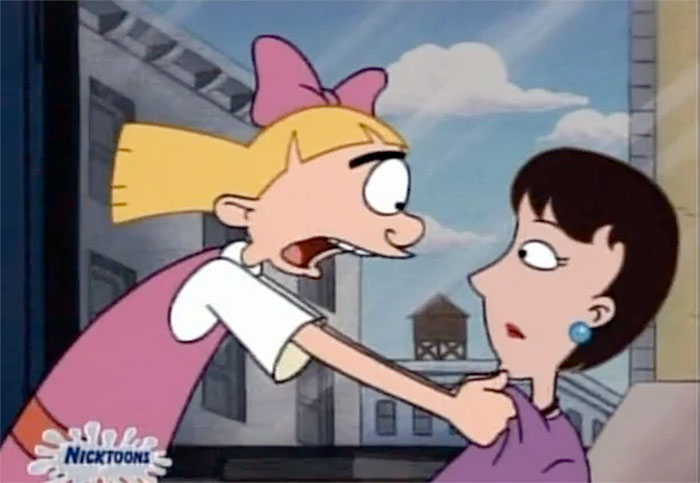
Dr. Bliss remains unflappable. Viewers get the sense she knew and simply wanted Helga to say it, to relieve herself of the burden. As Helga says, it has built up, possibly for more than nine years. Bliss shows immediate empathy. “So you love Arnold, and you’re scared to tell him, because he might not love you back,” she says. She doesn’t delve into every detail, but the implication is, if Helga’s feelings are unrequited, she’s afraid she’ll lose the one person who treated her well. Dr. Bliss encourages Helga to continue expressing her love for Arnold constructively–no more punching Brainy, for one. Additionally, she encourages Helga to tell Arnold her feelings, but only when she’s ready. At this point, the session ends, and Helga is actually reluctant to leave. Dr. Bliss reassures her they can talk again, and Helga leaves, turning back to run and give the psychologist a hug.
We never see Dr. Bliss again, but we can well infer Helga continued to get her help. Other Arnold stories, such as the theatrical movie, show Helga and Arnold in a more amicable relationship. Helga and Arnold may never become committed to each other. After all, they’re only kids. But from “Helga on the Couch” on, viewers can comfortably presume Helga has hope for love and positive change in her life. It’s a bigger, deeper arc than perhaps any animated antagonist has ever gotten. It’s also a great lesson for older elementary kids, who may never know all the details Dr. Bliss did, but again, can mirror her compassion.
Doug and Disney’s Doug: Entering the In-Between

Along with elementary protagonists, Nickelodeon and Disney have given us a couple great middle school protagonists. The first of these is Doug Funnie from the Nickelodeon and Disney incarnations of the eponymous show. Doug premiered as an original Nicktoon in 1991, running for four seasons and being shown in syndication from 1995 until about 1998. Disney picked up the show, retooled as Brand Spanking New Doug and then Disney’s Doug, as part of the One Saturday Morning blog in 1996. Created by Jim Jinkins and originally the Jumbo Pictures team, Doug chronicles the ups and downs of sixth grade for one creative, introverted “new kid in town.”
It might seem odd to place Doug and his show at this point in our discussion. Compared to Hey, Arnold, Doug doesn’t deal with mature themes, at least not in its first incarnation. It’s set in the relative safety of suburbia, not a gritty inner city. As for Doug’s age, although sixth grade is often considered the first year of middle school, it’s still upper elementary for many schools (see Recess). However, sixth-graders are developmentally in a completely different place than younger students. They still enjoy activities and engage in emotions older people might consider “childish,” but are growing into their more mature identities. They are experimenting with more mature concepts such as romantic love and career paths. Perhaps most importantly, viewers Doug Funnie’s age are entering the stage where they can think and work abstractly. Doug and friends are a good cast with which to explore these changes, within the safety of a gradually deepening environment.
New in Every Sense of the Word
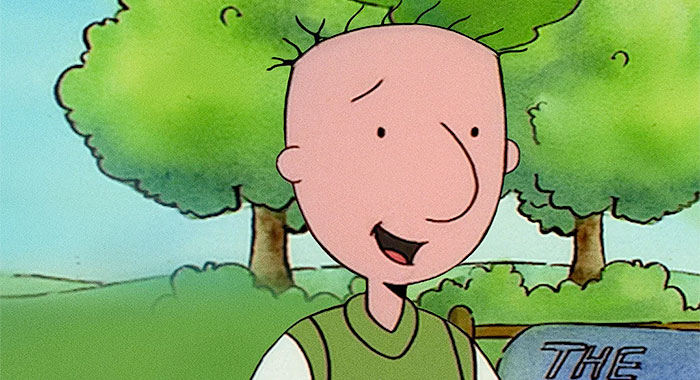
Doug Funnie and the Doug shows work for an intro to junior high because everything about them is uniquely new. When we first meet Doug, he’s just moved to Bluffington from Bloatsburg and is “the new kid.” As he says in voiceover, “New town. New school. New friends. I wonder what it’ll be like?” And indeed, nothing is what he’s used to. When he volunteers to pick up lunch for his family at the local burger place, the cashier acts bemused when she hears his order. Future friend Skeeter Valentine has to translate. In Bluffington, three burgers, one no pickles, one no onions, a fish sandwich, and four grape sodas are, “Three moo cows, one no cukes, one no tears, one wet one, and four from the vine.” A salad from the salad bar is still, “One salad from the salad bar,” but Doug feels he’s already messed up and looked dumb in front of a lot of the local kids, for whom the Honker Burger is a hangout.
The situation worsens when Doug spots a pretty girl from the booth he’s sharing with Skeeter while awaiting his order. Skeeter explains her name is Patti Mayonnaise, and Doug muses her name “sounds like music.” Skeeter offers to introduce Doug, but he’s too nervous. He imagines he will bungle the introduction horribly, and not only Patti, but everyone in the Honker Burger, will brand him a “loser.”
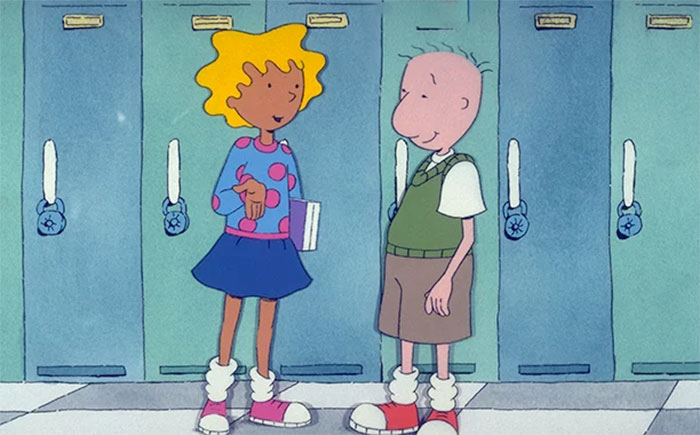
Doug’s reaction marks a key difference between him and younger animated protagonists. Beginning with his pilot episode, Doug is extremely concerned with how others view him. He encounters social pressure from day one in Bluffington. Sometimes, his imagination blows situations so out of proportion, he could read as having social anxiety. For example, when he accidentally squirts ketchup on Patti, he immediately assumes she’ll have the worst possible reaction. When she reassures Doug it’s okay, he doesn’t hear her at first, and continues apologizing. It’s only when Doug sees where the ketchup landed–conveniently in the center of Patti’s burger–that he can relax.
By pilot’s end, Doug has settled in to life in Bluffington. He has met a potential best friend (best human friend, with apologies to his dog Porkchop). He has overcome peer pressure through a clever, non-violent trick on future nemesis Roger Klotz. And though he admits he “may be rushing this a bit,” he thinks he’s “secretly in love with Patti Mayonnaise.” Doug uses his journal as a framing device to explain all this, inviting viewers to “lean on the fourth wall” and relate to him more deeply. His explorations of young love, complete autonomy over who will be a friend or an enemy, and exploring a new town independently, cement the idea that Doug is more “grown up” than our other protagonists. Moreover, he’s growing up alongside viewers rather than becoming an echo of their experiences. Doug and his show start off with a great message. Growing up might be uncomfortable. You might squirt ketchup on a crush, have to stick your neck out to make friends, or end up at the local lake chasing down a Neematoad, until you figure out how to beat a bully at their own game. Still, growing up will be an adventure, and may often be fun.
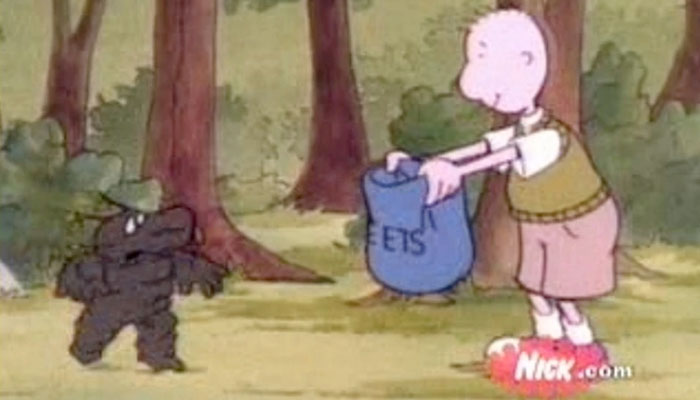
Growing Beyond Personality Labels
Like some of our lead protagonists, such as Arnold and T.J., Doug Funnie is an everyman when compared to his friends. In Doug and Disney’s Doug though, defining personality traits are largely absent. Viewers can still tell, up to a point, who everyone is and what interests them. Chalky Studebaker is the multi-sport athlete–but he’s also a straight-A student who fits in well with brainy and sporty kids. Skeeter Valentine is the ever-loyal, goofy best friend–but he’s also a certified genius who keeps his smarts under wraps, not to dumb himself down but because he’s honestly truer to himself as a regular guy. Patti Mayonnaise is sort of a female Chalky, an “academic athlete” popular with everyone. In addition, she’s a part-time homeschooler being raised by a single, wheelchair-using dad. However, the person with the most depth, and the one who grows the most beyond personality labels, is Doug himself.
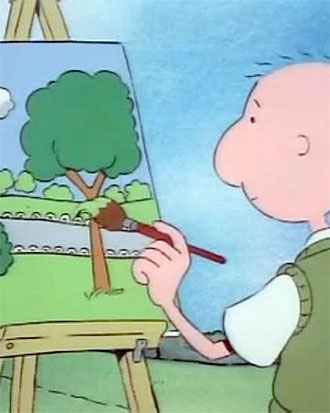
Through his two shows, viewers get to see Doug’s journey as a middle school kid, plus his journey to find out who and what he is outside the safety of family and well-defined friends. His interests and ambitions become part of a bigger arc than our other protagonists have experienced. Plus, those interests and ambitions take Doug down a lot of different paths and help him solve many problems. They are not confined to episodes wherein Doug’s interest or hobby is the central plot point.
The best example is Doug’s talent for drawing, and the characters and stories he comes up with for his drawings. He’s best known for Quailman and Quail-Dog, a superhero and pet duo who look a lot like Doug and Porkchop, except that Quailman wears a red cape, his underwear over his pants, and a belt on his head. During the Nickelodeon incarnation of Doug, Quailman mostly stays in Doug’s imagination, except if he’s doodling during free time at school. But the alter ego does help him out a few times. In an early episode for instance, Doug becomes sick of seeing Roger harass Patti. When Patti gets detention for something Roger did, Doug has had it and confronts Roger, who challenges him to a fight. Doug muses, “What would Quailman do,” and decides to fall back on his alter ego’s powers. These are “bobbing and darting,” plus “the Quail Eye,” which involves staring an enemy down until they are “helpless and stupefied.”
In theory, Doug’s strategy is laughable and might make him look a little unhinged. Even Skeeter wonders what the heck Doug is talking about when the latter begins describing his “quail powers.” However, Doug is able to move frequently and quickly enough to confuse Roger, who can’t beat Doug up because he can’t keep up. And although Doug’s “Quail Eye” is not super-powered, Roger gets creeped out when Doug stares him down. Roger basically stomps away muttering the whole fight scenario has become “stupid.” Meanwhile, an impressed Patti exults, “You won a fight without lifting a finger!” This somewhat simple episode cements Doug’s creativity, and would go on to be the foundation of his development as a nonviolent, introvert who isn’t “typically” masculine but nevertheless becomes an understated hero.
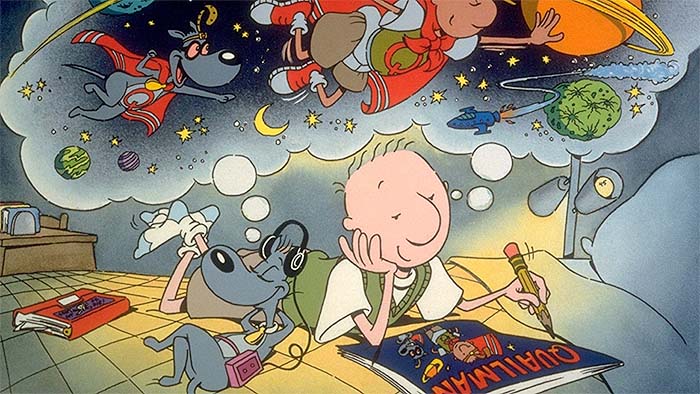
By the time Doug evolved into Disney’s Doug, Doug’s artistic talents took the spotlight more. During the Disney series, viewers saw him create full Quailman comic stories, which were acted out as full episodes. Versions of Roger Klotz, from Klotzilla to the mad scientist Dr. Klotzenstein, were still somewhat frequent adversaries. Legalistic Vice Principal, later Principal, Bone took that role too, as a rule-obsessed baron or robot. However, as Doug’s maturity grew, so did his alter ego and comic adventures. In Disney’s Doug, Quailman and Doug himself didn’t always face antagonists. Sometimes they had to deal with problems centered on people they liked or loved.
Among other examples, Doug and Quailman faced the first problem in “Doug: Quailman vs. Supersport.” In real life, Doug has begun resenting that Patti is great at everything, especially his weaker areas like sports. It seems that every time Doug is set to excel, Patti overshadows him. So in his imagination, Doug pairs Quailman with a Patti alter ego, Supersport. She’s Quailman’s first female compatriot and the definition of “girl power,” using a glowing Super Sports Ball in her quests to save the day. Quailman wants to protect Supersport, treating her as a sidekick at best and a distressed damsel at worst. Thus, he becomes frustrated when not only does Supersport not need his help, but comes up with world-saving plans before he does.
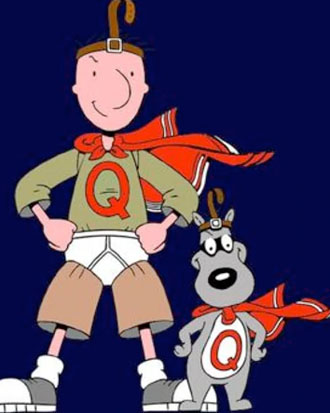
At first, Quailman is happy to work with Supersport, damsel in distress expectations notwithstanding. The problem is, her exploits are so great, the townspeople tend to forget the two heroes are a team. It gets to the point where headlines read, “SUPERSPORT SAVES DAY…QUAILMAN THERE, TOO.” Quailman flies off to sulk, leaving Supersport alone and vulnerable to bad guys. One such villain steals her Super Sports Ball and power source. As the villain runs amok, the surrounding town devolves into chaos.
By this time, Quailman has rethought his attitude toward Supersport, as real-life Doug has rethought his attitude toward Patti. After seeing their friends vulnerable, both heroes realize they can’t actually be the “heroes” all the time. They can’t be, nor do they need to be, the center of attention. As talented as they are alone, they sometimes need and want help from people who are skilled in other areas. When help is needed, it hurts both parties if one person’s skills are seen as threats.
These lessons are not scaled-up versions of the children’s show standbys, “Be kind” or “Let others take the lead.” Rather, the standbys are the building blocks for more grown-up layers. By the time they’re Doug’s age, most kids are becoming comfortable with abstract thinking and fully developed empathy. They’re often told or taught, “The world doesn’t revolve around you,” but for the first time, kids Doug’s age can understand what that means in real-life situations. Additionally, they can understand they don’t have to stick to a label, such as “the best artist” or “the best athlete” to distinguish themselves from peers. Viewers watching episodes like the ones we’ve described are probably more used to working on teams, or competing with others who are strong in their chosen hobbies. These viewers have felt Doug’s insecurities. With help from a fictional hero–or a few–real viewers can continue working through those insecurities, learning they can be loved and appreciated when they aren’t the best or the “main character.”
Bigger Emotions and Consequences
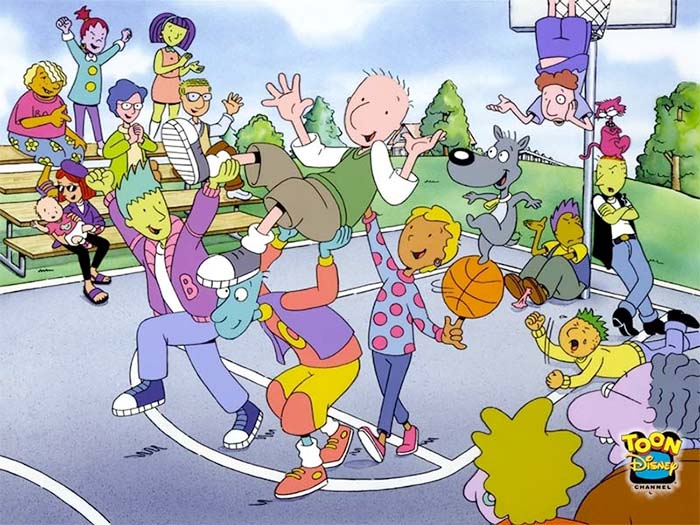
Doug Funnie is rather famous for his vivid and sometimes overblown imagination. In a lot of episodes, this gets played for laughs. By the time they’ve watched both Doug shows (currently streaming on Disney and Paramount Plus), viewers have seen Doug overreact to many common, relatable situations. He has gotten his first cavity and pictured his dentist as sadistic, thanks to an evil dentist in a Smash Adams movie. He’s gained a little puberty weight and assumed everyone would see him as a monster and “big, fat loser.” He’s gotten a zit and pictured a scenario in which the blackhead poked Patti’s eye out. Yet each time Doug goes through this angst, the situation works out a lot better than he imagined it would. Former viewers have speculated Doug is born lucky, maybe a bit too much so for his own good.
Like a lot of kids though, Doug has faced situations where his problems aren’t so innocent. Realistically, he may not get a happy ending; shooting for a positive ending might be a stretch. Plus, no matter how the situation ends up, Doug and those around him will be permanently changed for living through it.
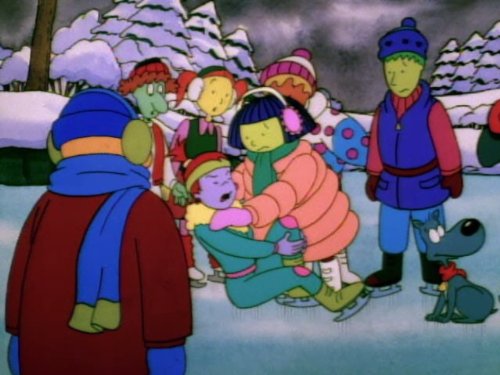
One well-remembered high-stakes scenario occurs at Christmastime. Our hero is out playing ice hockey with his friends on Lucky Duck Lake, Porkchop in tow as usual. When the pine cone the kids use for a puck goes out of bounds, Beebee Bluff skates over to retrieve it–right toward a patch of thin ice nobody except Porkchop notices. Porkchop tries to get Beebee away from the ice, but to do so, he clamps down on her ankle. Porkchop is thus taken to the pound, and everyone believes the innocent dog turned violent with no provocation. Even Doug assumes the worst at first, until he has time to think it through and conclude his dog, his best friend, surely didn’t mean to hurt Beebee.
This is where “Doug’s Christmas Story” takes a dark turn. Beebee Bluff is the daughter of Bill Bluff, the richest and most influential man in town. Plus, her dog bite is apparently so bad she’s in the hospital. On top of this, the former mayor has gotten wind of the story through his new radio talk show. As a result, a media campaign has been launched against Porkchop, and the Bluffs are insisting he be put to sleep. The implications aren’t graphic, but we do get a heart-wrenching montage of Doug remembering past Christmases with Porkchop. It begins with the Christmas he got Porkchop as a puppy, and ends with an imagining of a very real possibility–Doug standing in the rain at a gravesite.
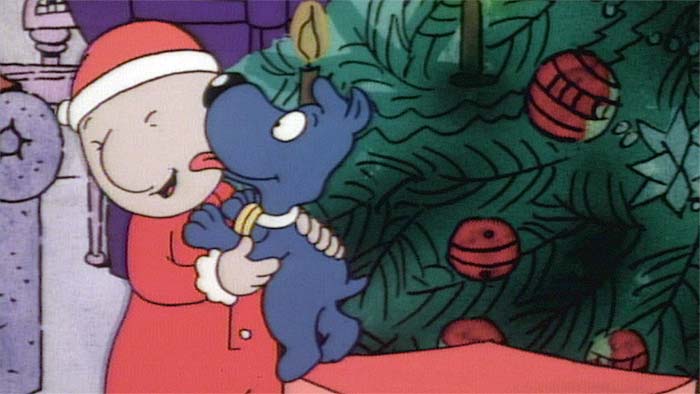
For most of the episode, it appears Doug’s fears will become reality. He tries to petition the neighborhood to stand up for Porkchop, but few people want to get involved. “It’s the holidays…a happy time…this is not happy,” a neighbor says before closing the door in Doug’s face. Others are less gentle, saying, “I don’t wanna be mixed up in this mess,” or reacting badly when they hear the dog in Doug’s petition is the same one on the news. Mom, Dad, and Doug’s older sister Judy try to help, but they don’t have enough clout to go against the Bluffs or the town, and are too busy with Christmas prep to think through plans that could save Porkchop.
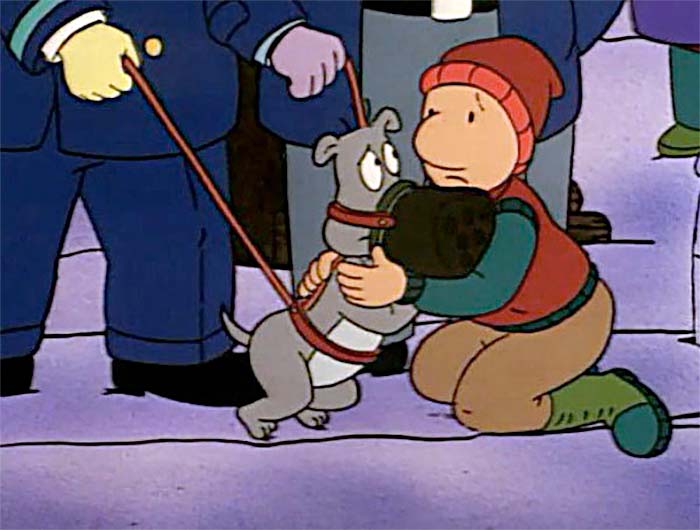
By now, Doug is stewing in sadness, anger, and feelings of hopelessness and helplessness that might be unfamiliar to target demographic viewers. His fairly safe, protected world may come crashing down on him, at Christmas no less. And because Porkchop is a dog, subject to different rules and laws than humans, it’s questionable whether anyone will truly know what his death would do to Doug, who hasn’t faced such grim realities before. His family and friends will sympathize and comfort, but erroneously or not, Doug feels they can’t empathize. Doug is placed in a vulnerable position where many real kids find themselves. He has to figure out how to deal with mixed, huge emotions, and avoid unacceptable consequences, almost completely on his own.
At first, Doug turns to fictional heroes for help, as we’ve seen him do countless times. But the creative, peace-loving Quailman doesn’t have much to say except, “Porkchop didn’t do anything wrong,” a mantra that rises above all the other “character voices” in Doug’s head. Secret agent and film star Smash Adams suggests high-tech gadgetry; the best Doug can come up with is a smoke bomb disguised as a cupcake. He uses said cupcake to distract a dog pound official so he can get in to see Porkchop, but the security surrounding Doug’s “very, very bad dog” only heightens his hopelessness. Meanwhile, Indiana Jones lookalike Race Canyon, another of Doug’s heroes, simply suggests punching and kicking everybody out of the way. As all these ideas bounce around in his mind, Doug becomes increasingly frustrated. In his imagination, he declares, “I have to do this myself.”
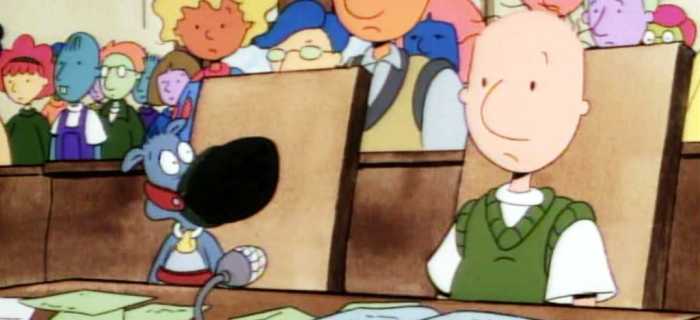
As viewers his age are learning to do, Doug puts away imagined, heroic, or overblown solutions in favor of more down-to-earth, “adult” ones. He goes to court with his family on Porkchop’s behalf, and retreats back into his imagination to cope with the prosecution’s testimony. When he’s finally allowed to speak though, Doug focuses on the facts. Through a muzzle, Porkchop has been trying to communicate with Doug during the hearing, indicating something important is at the lake. “Young man, we better find something out there,” Judge Peterson threatens, miffed at possibly missing Christmas Eve with his family. Doug is undaunted. “Porkchop is part of my family, just as much as Beebee is to the Bluffs,” he counters. He then makes a speech reminding everyone what a positive influence Porkchop is on Bluffington, which convinces Judge Peterson to reconvene at Lucky Duck Lake.
Lucky Duck Lake remains pretty much like the kids left it. Patti spots the puck pine cone almost exactly where it was, and Beebee steps up to show everyone where exactly she was skating. But the untouched lake means the thin ice is still there, and Porkchop lunges, held back by muzzle and leash. “It’s just lucky we have these guards this time,” Bill Bluff scoffs–as his daughter plunges beneath the ice. While everyone else panics, Porkchop breaks free and pulls Beebee to safety. He is immediately exonerated, and we get a shot of Doug hugging his beloved pet, tears in his voice as he exclaims, “Porkchop!”

The episode ends as warmly and happily as one would expect from a holiday show. Doug tells us people came by all during Christmas Day to see Porkchop, including the Bluffs and the mayor. The Funnies host an extravagant Christmas dinner for all the dogs at the pound, with Mr. Bluff giving a toast. Doug notes all those dogs will have homes by the New Year too, thanks to the mayor’s radio show putting out a major adoption call. The ending can read a little hokey, although it’s certainly a relief after the stakes Porkchop and Doug faced for half an hour. However, the audience walks away knowing Doug has received a precious, intangible gift this Christmas. He’s grown past imaginary heroics, to standing up for someone he loves more than anyone, and succeeding in helping them. He’s learned the world can be bigger, colder, and meaner than he knew, but that perseverance and hope can result in rising above the ugliness. Doug probably lost some measure of innocence during this adventure, as most viewers have by the time they’re in middle school. However, the mixing of reality with optimism in place of unbridled innocence is actually sweeter and easier to root for.
As Told by Ginger: In-Between and Beyond
By 2000, Nicktoons were being retooled or had lost some luster. Doug and Ren and Stimpy had been off the air for years. As for Rugrats, new seasons were in production, but many viewers said new episodes couldn’t stand up to the old “classics.” Hey Arnold was in its last season, with most fifth season episodes being aired few and far between. Other Nicktoons only lasted one to three seasons, and none of the newer shows focused as much on typical kid problems as they once did.
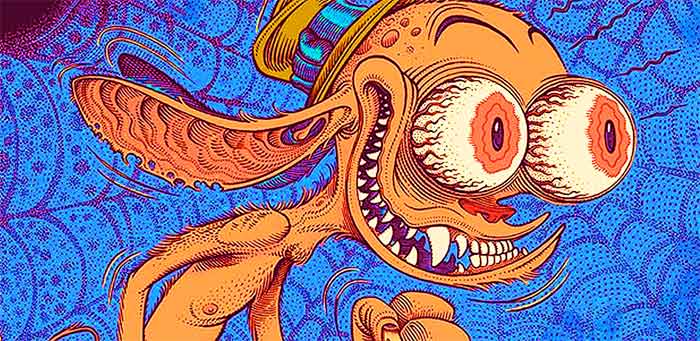
When As Told By Ginger premiered in October 2000 then, audiences weren’t sure what they would get. The premise of a young girl adjusting to junior high felt familiar–perhaps too familiar. It had been done in Doug, and even in Hey Arnold to a point, because of the latter show’s deeper topics. Trailers and clips set protagonist Ginger Foutley up to look like a female Doug Funnie, down to name similarities.
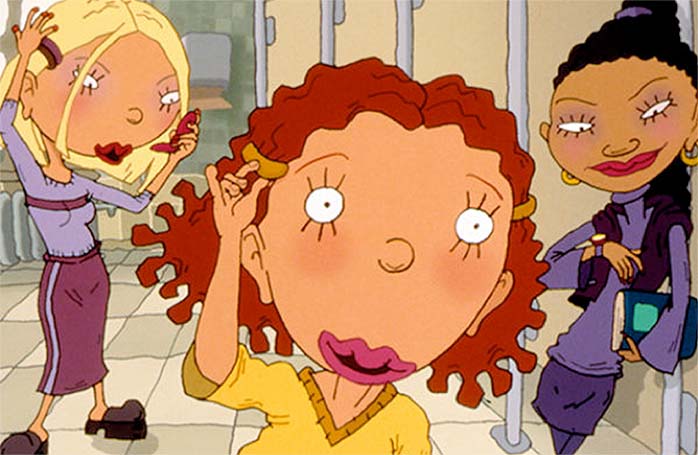
Viewers would soon find out though, Ginger was no Doug and her neighborhood of Sheltered Shrubs was no Bluffington. Ginger’s show remains kid-friendly, but is definitely geared toward junior high and early high school teens. Thus, it serves the oldest primary demographic of any show in our discussion. Additionally, As Told By Ginger is far less likely to use the conventions of other Nickelodeon and Disney animation. Its characters are designed more realistically than their predecessors. The primary demographic was impressed the characters changed clothes almost every episode, rather than sticking to signature outfits. The audience also responded well to a show format that, while still half an hour, focused on one episode, rather than splitting the time slot into two ten-minute episodes. In fact, As Told By Ginger was the first Nicktoon to have several two- or three-part episodes. Some of these were “special” episodes geared toward holidays or milestones, as viewers were used to seeing. However, some were the usual “slice of life” episodes with longer, more impactful arcs.
Like its contemporaries, As Told By Ginger didn’t last long, only four seasons. However, it remains one of the most memorable Nicktoons in the canon, especially for kids growing up in the ’90s and ’00s. For young teenagers in the ’00s, Ginger often reads as the final springboard show they need to complete the growing up story as told by animation.
Complex and Evolving Friendships
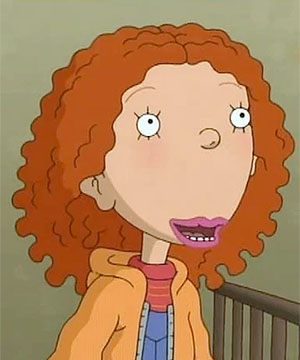
As kids transition from elementary to middle school, friendships change. The best friend who has stuck by you since kindergarten may suddenly develop new interests or gravitate toward a new friend group. Someone who’s a friend on Monday might be an enemy on Tuesday, a best pal by Friday, and persona non grata in two weeks. As Told By Ginger explored this in wonderful depth. Like our other protagonists, Ginger has a core friend group; she, Dodie, and Macie have been tight for years. But that relationship evolves, as does Ginger’s relationships with other classmates, including those she never imagined hanging out with before.
One of Ginger‘s most interesting friendship arcs revolves around Courtney Gripling. Courtney is the richest and most popular girl at Lucky Junior High, and in many ways, is a stereotype (beautiful, impeccably dressed, the hostess of elaborate parties, and so on). Because of these stereotypical traits, Ginger starts out wanting to be Courtney’s friend, or at least stay on her good side. As Courtney’s social-climbing best friend Miranda says, “She’s a total wannabe.”
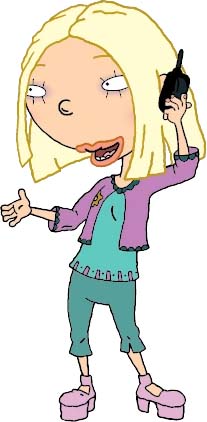
But while Ginger may read as a “wannabe,” Courtney doesn’t always read as a perfect and popular paragon. Often, she seeks out Ginger’s friendship because she wants to know how “regular” girls socialize. While this can read as “slumming,” it usually comes across as a sincere desire for Courtney to be treated as one of the girls. For her part, Ginger enjoys attention and popularity when it comes to her. She can make major mistakes in attempts to be popular, such as when she gets caught stealing in “Ginger the Juvey.” But overall, Ginger is a lot more secure in her friendships, choices, and self than Courtney is. Thus, refreshingly, Ginger and Courtney don’t have a “hero and bully” or “good girl and mean girl” relationship, as one might expect from a series about middle school girls. Their relationship is more warm acquaintance/frenemy, depending on the episode. In other words, they interact a lot like real middle schoolers.
Additionally, Ginger experiences a lot of growth, including growing apart, with best friends Dodie and Macie. She and Dodie have a particularly rocky arc, starting with the episode “Of Lice and Friends.” In that episode, Dodie is chosen to give the morning and afternoon announcements at school, and quickly turns the task into a PA-system-supported gossip column. Some students, like Courtney and Miranda, are impressed. But Ginger wonders if Dodie is going too far in sharing the personal business of students and staff, such as the fact that school chef Bob used to work at a prison. When Ginger asks Dodie about her methods, Dodie only says, “The students have a right to know.”
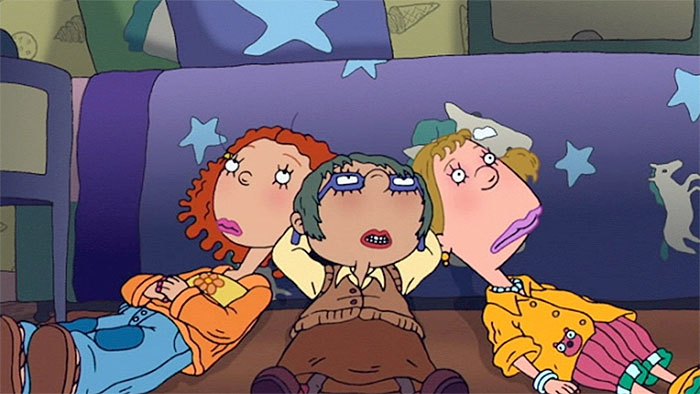
Ginger leaves the issue alone at first, figuring most of Dodie’s reports, such as about the location of the janitor’s “missing” ladder, are harmless. But then Dodie announces a school-wide lice check. The school nurse is out, so thanks to Dodie, the entire student body learns Ginger’s mom, an RN, is “gonna be the nit nurse.” Worse than that, Dodie snoops in the front office desk and finds a list of students who tested positive for lice. One of those students is Courtney.
Having witnessed the students’ negative reactions to the lice-positive–whispers, stares, shock, and teasing–Ginger knows she can’t let Dodie’s gossip continue, best friend or not. When Courtney pleads, “You’ve got to stop her,” Ginger doesn’t hesitate. She races from homeroom all the way to the office, dives across the desk, and disconnects Dodie’s mic just before the latter announces Courtney’s name. Dodie is incensed, claiming Ginger has ruined her chance to “go down in Lucky Junior High history,” and again, “the students have a right to know.” She adds the girls can never be friends again. “We’re not friends now!” Ginger shouts.
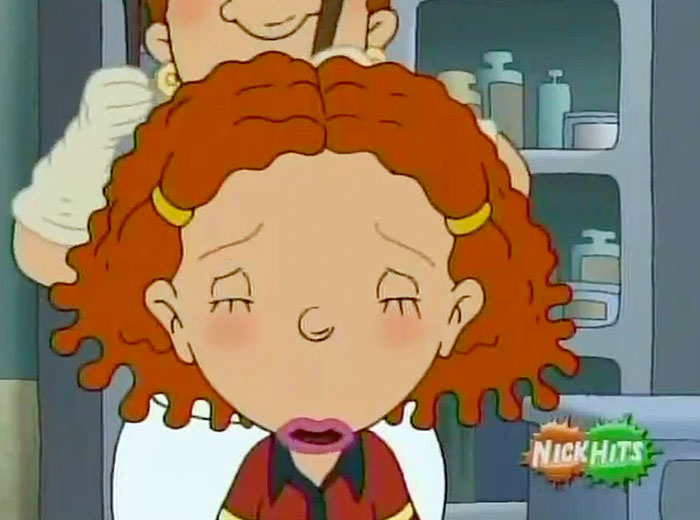
Most of the rest of the episode is tense, with Ginger and Dodie refusing to speak to each other and Macie caught in the middle. Although Ginger and Dodie do make up by episode’s end, the experience has caused both girls pain. In Dodie’s case, the lice fiasco has shown her what can happen when a desire for popularity takes over, and it’s a lesson she doesn’t completely learn. In the ensuing seasons of Ginger, viewers would see Ginger and Dodie come into conflict over this tendency several more times, to the point where Ginger wonders if she and Dodie are growing apart. The girls always make up, but viewers are meant to understand they may soon go their separate ways–and that’s okay.
The Permanence of Change
Most animated shows have a status quo, and to varying degrees, they obey it. In Recess for instance, the six main kids were generally defined by character types and labels, despite secondary interests. In Doug, the title character dealt with some big changes, but maintained a static friendship circle and place in Bluffington’s hierarchy throughout the series. In contrast, As Told By Ginger shakes up the kids’ animation status quo that tends to say, “Characters must stay essentially the same, can’t move away from established places or people in any way, and must be left behind if they change too much.”
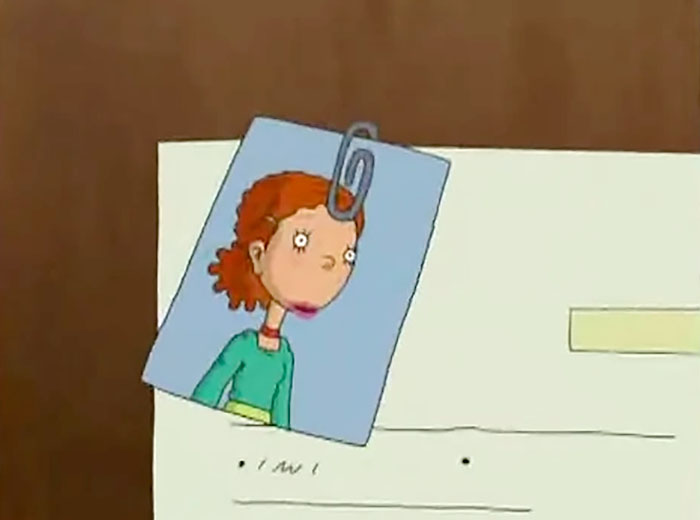
One of the first times this happens occurs in a three-part episode called “Foutleys on Ice,” which was originally aired as a TV movie. Ginger, a budding writer and fine arts enthusiast, has applied for a scholarship to Avalanche Arts Academy, located in a faraway mountain community. She doesn’t expect to get in, but the scheming Miranda Kilgallen has pulled some strings with rich friend Melissa “Mipsy” Mipson. Miranda’s plan is to have Mipsy talk to her uncle, who’s on the Avalanche Arts board, and convince him to go to bat for Ginger’s permanent acceptance to the Academy. That way, Miranda will never have to worry about Ginger “stealing” her friendship with Courtney again.
Ginger hesitates to leave Sheltered Shrubs, especially her best friends, her boyfriend Darren, and her single mom. But leave she does, and despite the fact that her new roommate Thea seems to be pushing her away from her old life, Ginger loves the Academy from her first day. She meets creative, like-minded students around every corner and experiences her first taste of full independence through dorm life. She even toys with new feelings for a guy named Fred, because as much as she loves Darren, she admits the relationship feels a little stale lately.
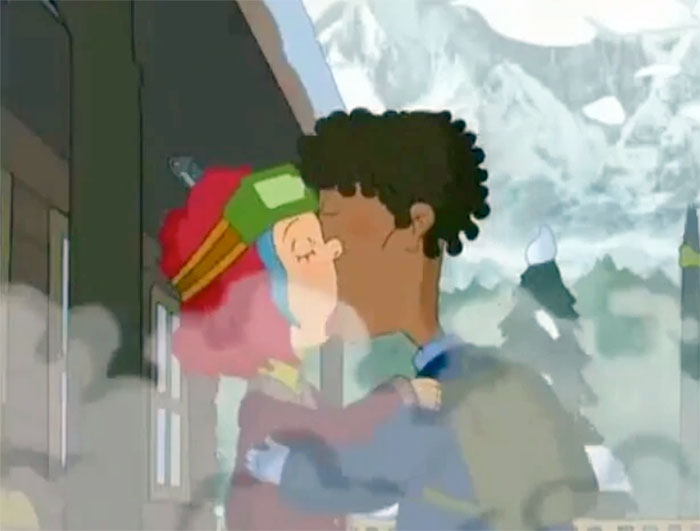
Ginger is offered a permanent Academy slot, and seriously considers taking it. In the end she doesn’t, partly because Darren hears what might happen and declares his love, and partly because “Thea” turns out to be Mipsy in disguise. Some viewers might say “Foutley’s on Ice” failed in showing change can be good, then, because Ginger returned to the status quo. Actually though, she didn’t. Throughout the rest of the series, we see small changes in Ginger’s personality that she learned at Avalanche Arts and decided to keep. Some changes are physical, like the evolution of her hairstyle from curly and clipped up to long and smooth with a blue streak. Others are mental and emotional; Ginger spends a lot more time on her writing and artistic pursuits, including delving into songwriting and starting a band. Viewers are given plenty of hints that Ginger, unlike her predecessors, is focused on the fine arts as a definite career path, and a path she will love into adulthood.
Increased Emotional Awareness
One way As Told By Ginger stood out from other Nicktoons was the time it spent on growing emotional awareness. Ginger Foutley often probed the causes of mixed emotions through her journal and narration, a bit like Doug Funnie. Unlike Doug however, Ginger and her creators weren’t content to tie up every episode in “happy ending” bows. Nor were they content to assume every problem connected to mixed emotions was easy to solve.
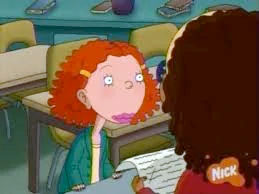
One of the first episodes to deal with emotional awareness is also one of the best-remembered. “And She Was Gone” sees Ginger penning a poem for a young authors’ competition with the reward of publication. She crafts a story-poem about a girl who “chose to walk alone” and seeks freedom from “puppet strings.” The girl “[longs] to fly away” and is “jealous of the steam that [makes] the air its only home.” Viewers see the story acted out in Gothic, borderline macabre, black and white animation, with the focus on a sad-eyed, dark-haired, overly thin female.
Once they read or hear her poem, Ginger’s friends and teachers are immediately concerned. Although English teacher and mentor Ms. Zorski likes the poem, she admits it “concerns” her and asks Ginger to see the school psychologist. “There are some very deep feelings in here,” Zorski says, and she’s right in adding they’re not what her star writer usually addresses. The school psychologist presses Ginger to admit the girl in the poem is her, and that she’s depressed or wants to disappear. Meanwhile, Dodie and Macie plead with Ginger to tell them if she ever wants to “go away like the girl in your story.”
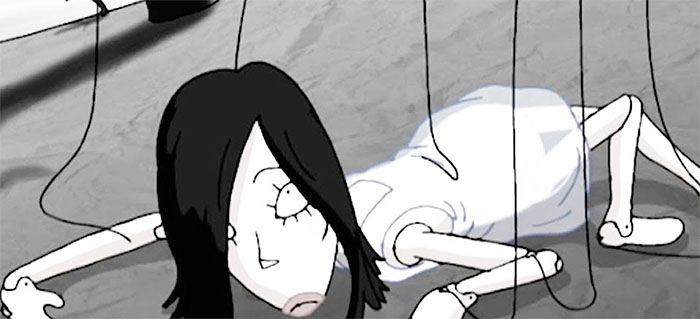
Counterintuitively, the more people insist Ginger is depressed, the more uncertain, apathetic, and sad she becomes. She repeatedly defends her work as fiction, but no one will listen. Everyone at school treats her differently. Courtney has jumped on the depressed/suicidal bandwagon because it got Ginger “scads” of attention, which only makes things worse. Ginger tries to deal with the fallout herself, a mark of a young adolescent’s bid for total independence. But she ends up yelling at or withdrawing from most people who love her, which only helps their case.
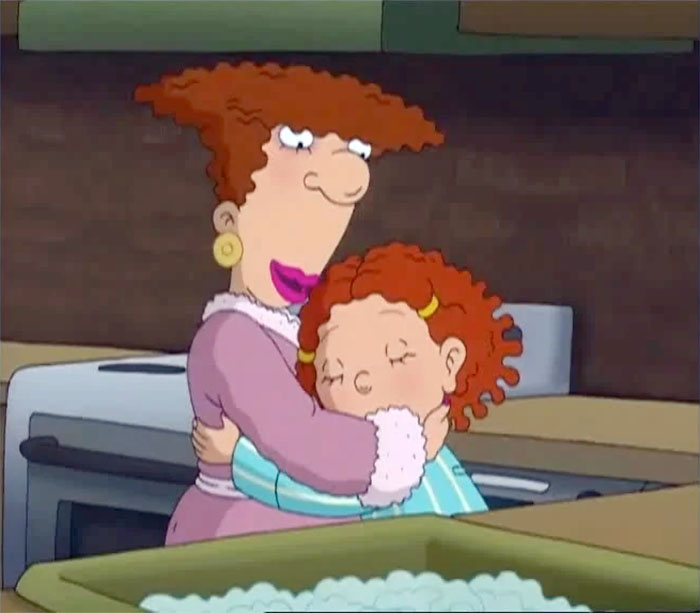
Finally, Ginger invites Mom to read her poem. This is the last way Ginger wants to handle the situation, but it turns out to be her best move. Mom reassures her she doesn’t think the fictional girl is a stand-in for her daughter. “You’re so good at understanding people’s feelings,” Mom says. “That’s why you write about them so well.” She adds that Dr. Mom is always available, may feel safer than the school psychologist, and is much cheaper. It’s exactly what Ginger needs to hear. She embraces Mom, and re-embraces all facets of her writing talent. At the end of the episode, we see Ginger’s story did eventually get published, although it’s unclear whether everyone ever did understand the author’s true intentions.

Ginger dealt with complex emotions and consequences again during “A Lesson in Tightropes.” In this late episode, she’s a high school freshman dealing with the pressures of rigorous academics, one unreasonable teacher, and many personal changes. By this time, she and Darren have been growing apart for many episodes, and Darren is now attracted to a cheerleader named Simone. Early in “Tightropes,” he breaks up with Ginger, despite her pleas to “try harder.” Darren reassures her the breakup isn’t her fault–“You’re smart and independent and wonderful, and you think football is stupid, and you’re probably right, and I’m just not right for you.” Ginger walks around after that with a “pain in the pit of [her] stomach”–a pain that’s been there for awhile, but takes her down with the breakup.
It turns out Ginger has a ruptured appendix with complications of an abscess and blood loss. Had her stepfather-to-be Dr. Dave not rushed her into surgery, she would have died. The whole Foutley family and Ginger’s friends are thrown into chaos. Mom agonizes over what would’ve happened if she’d been at work that night. Dodie and Macie are panicking because they heard rumors at school. Meanwhile, Ginger’s little brother Carl sticks close to Dr. Dave while lashing out at biological dad Jonas. Jonas got to the hospital as soon as he could but according to Carl, has no business butting in because he’s otherwise not around.
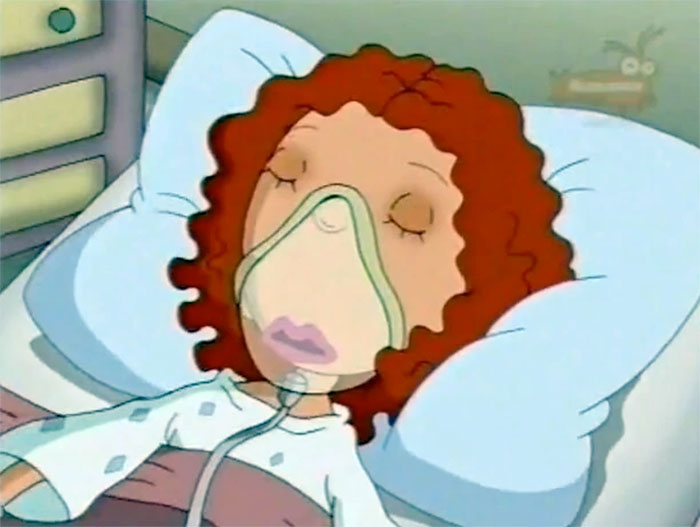
Meanwhile, Ginger struggles to reconcile what could’ve happened to her body, with what did happen in her heart. When Darren comes to visit, she’s unsure what to say, and the entire scene is painful for both young adults. She also refuses to talk to Dodie and Macie about the breakup, partially because she’s not ready to admit how much it hurts. When Ginger finds a card from Darren in her wastebasket, she throws it back out because he didn’t finish his message. What he did write was, to her, generic and uncaring.
Ginger comes to some sort of resolution thanks to Ms. Zorski, who drops by at the end of the episode. Ginger’s able to confide in her teacher when she couldn’t to anyone else, and shows Zorski the card. “He did finish it,” Zorski says of the message inside. “It just didn’t have an ending.” And that pretty much sums up a lot of Ginger’s personal journey, in this episode and otherwise. There are no “endings,” if what that means is, an ending where Ginger maintains the same friend and boyfriend she’s always had. There are no “endings” if that means Dad coming back, or Dr. Dave slipping into Dad’s role with no mess. There are only endings that begin something else. Ginger’s creators did a great job of teaching her this, and a great job of teaching viewers, too.
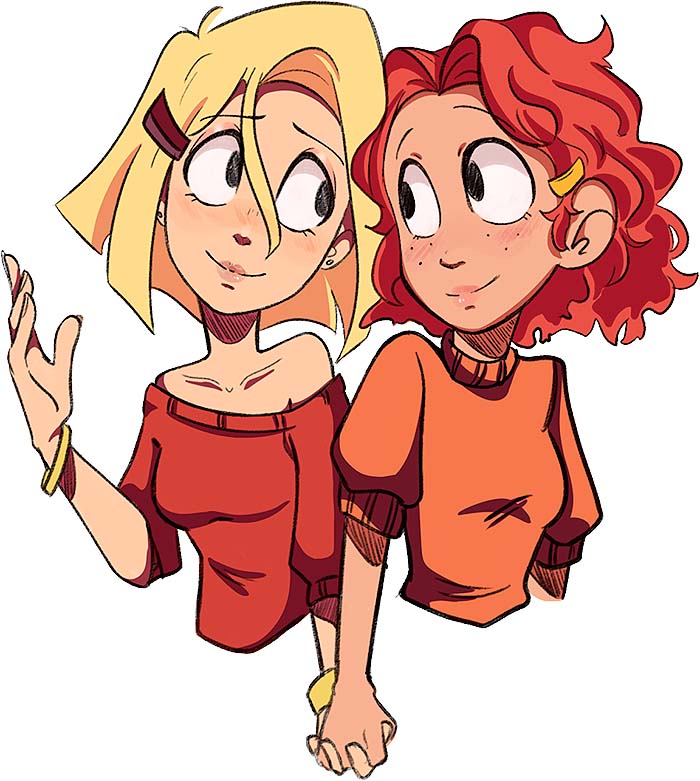
As Childhood’s Credits Roll
Of course, just because someone “ages out” of a Nicktoon or Disney animated show doesn’t mean they can’t ever enjoy them again. The 2010s and 2020s showed the exact opposite. Many if not most people of the last two generations are fond of nostalgia and enjoy experiencing or analyzing it. Yet it is fair to say watching these shows as an adult is extremely different from one’s first viewings.
Perhaps this is what has made the shows in our discussion so enduring. From a nostalgic perspective, they feel like coming home. Many viewers, including this writer, revisit them in part to reassure themselves that as we learned before, things really will be okay, if not always perfect. But perhaps most importantly, the animated Nick and Disney shows we have watched and rewatched act like our televised photo album. More than many other shows, they show us who we were, who we became, and who we can still be. We may not turn to animated characters for guidance anymore, but we will likely find the best versions of ourselves hidden inside the youngest, most creative, and most imaginative incarnations.
What do you think? Leave a comment.
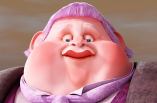
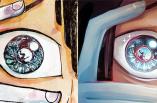
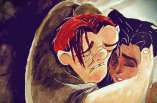
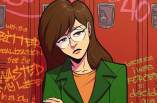

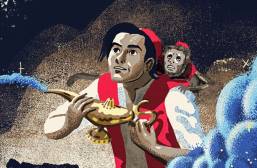
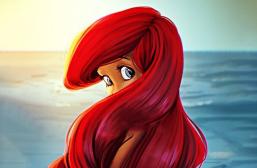
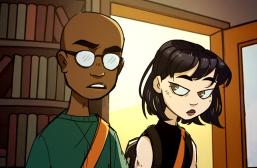
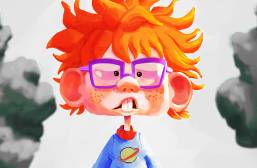
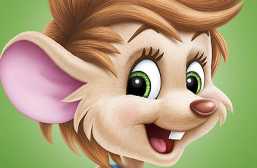
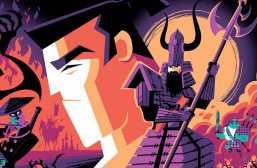
Rewatching Recess during lockdown was my best decision, I saw it so much as a kid but didn’t realise how truly brilliant it was until rewatching it, smart and funny.
I recently re watched the show after a sudden nostalgic hit and i also was surprised to see jow informative and morally good the tv series was it kind of made me realize how much my childhood was shaped around TJ and his friends.
Recess and Hey Arnold were both incredibly good at speaking to the audience in an intelligent way. They didn’t belittle the viewers and it always felt like the creators of both shows actually understood all of the issues we face as kids. I think that all of us could find some sense of relatability in all of the characters and the more grounded plots.
Easily one of Disney’s more underrated cartoons alongside Gargoyles.
I think a great thing about Hey Arnold is that it doesn’t just follow the main character the entire series through. There are episodes completely devoted to Helga and she’s what i think is the 2nd main character. Even still they have episodes completely about Sid, Harold, and Stinky separately and Arnold almost never shows up or ends up looking like he is a side character.. I mean even Oscar and Ernie get episodes alone and they are adult characters. It’s refreshing to have multiple characters to follow all with a different set of issues ideas and approaches to there problems.
Hey Arnold was my #1 favorite 90s cartoon. The lesson it taught me as a kid, it impacted me heavy. I stayed up every night when it would come on, even at 3am. I wouldn’t close my eyes until the credits were over. Loved every episode and I’m glad the Jungle Movie happened. I was in a FB group for years spreading the word to get it on air. Glad it payed off in the end.
I loved this show so much when i was a child, it had such a unique and strange vibe different from everything else.
There’s a lot to be said about the now-dead or dying american slice of life cartoon. I think my favorite was Recess, which may have to do with the way it sort of glamourized the mundane. Nothing normal was ever actually normal in Recess, it was always a way over-the-top exaggeration of it. In the same way that A Christmas Story or The Sandlot filters the ordinary through the lens of memory, Recess filtered everything through the lens of childhood’s misplaced sense of importance, where the trivialities of recreation are the most important thing to a kid.
Doug’s simplicity is why I like it so much, but there is one major episode from Nick’s Doug I think defines me as a person to this day: Doug’s in the Money. An episode that says you don’t always get the appropriate reward for doing the right thing, but you yourself know that it is the right thing to do. The show didn’t need to be funny, like his misspelled last name, it needed to be simple… and I admire it for that even when it transitioned to Disney.
Does a slice of life show really need to take risks or tackle heavy subject matter to be memorable? With a few exceptions (e.g. the loss of a parent, the death of a pet), The Rugrats centered around incredibly light hearted subject matter. It holds up because the characters are interesting and dynamic enough for me to care about their mundane adventures. The babies’ perspective on everyday life were also charming.
Doug falls flat for me for two reasons:
1. The characters are bland and one-dimensional.
2. The imagination spots and drama in the show are so over-the-top that those moments come across as ridiculous rather than relatable and endearing.
I dont hate the show either. It has it moments (the quail man segments are charming and The Beets are a clever Beatles parody). I also give it credit for influencing the slice of life genre. Unfortunately it’s a childhood favorite that doesnt hold up for me. I tried rewatching it a few years ago and was shocked at how boring it is in retrospect.
Remember the Christmas special where Doug had to fight tooth and nail to save Porkchop from being euthanized?
That episode was DARK.
I always loved to see more in-depth writing of animated series like this. I was always curious about these and it feels like I’ve watched the entire series myself with all your thoughtful insights.
Really liked how you broke it down and told us what was/wasn’t working. Thanks for sharing.
I truly enjoyed your article as it gave incredible insight to Ginger, a truly underrated show. This was actually my favorite TV show as a kid. I’m 26 now & have struggled w the theme of letting go of toxic friendships. I moved abroad 2 years ago & was feeling homesick & I rewatched all 3 seasons in my 1st year to cope w the decision of leaving behind old friends & family to start a new life somewhere else. The show inspired me to get a tattoo of some lyrics of the theme song. “Till further notice, I’m in between. From where I’m standing, my grass is green”. But yea you got a new subbie. I like your genuine vibe & I can tell this is a passion for you. The numbers will come but don’t stop putting out amazing & authentic content.
It’s been at least a decade since I’ve watched this show and I must say, I was too young when it was on the air to really enjoy the writing and characters. I’m honestly surprised that a show dealing with so many adult themes would even be on Nick. I’m no stranger to the older shows of the 90’s like Ren and Stimpy, but watching this really changed my perception of it. I might have to take a look again when I get a chance.
They did a good job at portraying a good person within Ginger in As Told By Ginger. The mistake in keeping her messed up close friends made it relatable for some people. I’m not saying Ginger was perfect but she was very forgiving of others. Ginger being the person she is and having a supporting mom with genuine advise made it more relatable for me. As i got older i learned to forgive, but to stay away from the people that think they can step all over me.
The best cartoon ever was “Courage the Cowardly Dog”. With Muriel and Eustace in a town called Nowhere. Unfortunately for Nickleodean it was on Cartoon Network. All I can say is “You Stupid Dog”!
Ahhhh… Rugrats (the Nicktoon most British 90s kids remember given that it was one of the first to be shown on terrestrial TV here) and Hey Arnold!. Loved both of those when I was growing up.
Rocko was always my favourite – Ren and Stimpy was crazy fun, but seemed to be trying too hard to be outrageous, Rocko’s subtlety won out every time – Dr Hutchinson was a disabled character without fuss, and the family playing a board game called ‘Spank the Monkey’ will never leave me. Happy memories of my early twenties and shift work.
We’re in another golden era of kids TV right now, but boy were the 90s unique.
Reading this article brought back some memories that I had forgotten that I had. Thanks!
No “The Fairly Odd Parents” then? I loved that when my kids were younger.
Yeah, the first few seasons at least were very good.
As an American who grew up with Nickelodeon starting around, oh, 1986, I totally approve of this article.
Rugrats, Hey Arnold and Ahh Real Monsters, shows what a golden age of animation I lived through when I was younger. Johnny the Homicidal Maniac is a great comic too.
With Ginger, I noticed in the fandom how some people think Macie is horrible. But given how childlike she is, Dodie can easily manipulate her friends as we can see. Dodie is the Mastermind behind all the horrible things that happen.
Man it would’ve been a game changer if Ginger dropped Dodie as a friend. The show is constantly about change, so far that Ginger and Darren split. Why they didn’t actually hold Dodie accountable and show that if you’re selfish over and over you slowly will lose people around you. I pretend that Ginger dropped her in the end lol.
I think As Told By Ginger would have done better and been more widely remembered if they had gone with a different art style. The purposeful “Ugly-Cute” style of Klasky-Csupo works for goofy comedy/kiddie shows like Rugrats and The Wild Thornberrys. But I think that style actively turned away the demographic that Ginger was clearly made for (ie young girls and teenagers). Ginger was airing when I was a pre-teen; and the art style turned me off of watching it for a long time. And, as a kid, I really HATED the gross out side plots with Carl and felt like they were only put there so there would be something for young boys to get out of the show.
Don’t get me wrong, I’m not saying that the characters should have all looked like little Barbie dolls so that little girls would be drawn to them. I just think the ugly style was distracting a lot of the time. Like, how are you supposed to know that Courtney and Miranda are “prettier” than Ginger and her friends when EVERY character in that show looks like a weird, lumpy mess? Since every character is equally weird looking, your only cue that someone is a homely nerd is that they’re wearing glasses or headgear or frumpy clothes or other stereotypical “nerdy” things.
It’s still a good show. But the art style actively worked against it and that’s just a shame. For that reason alone, I think Ginger would benefit from a reboot.
I’m re-watching the show right now and I just skip past all of carl’s plot points, they just don’t interest me.
When I first looked back on Doug, I felt some of the voice acting serves as a vision to what we would hear on Futurama since Doug sounds a lot like Fry (There were both voiced by Billy West). Also, in just one episode, that same actor voiced an artist using the voice that would later be used for Dr. Zoidberg.
I still love Doug today. Has a great heart and was very realistic and grounded (as crazy as it sometimes got).
Hey! Arnold had always been kind of a mystery to me. I never really understood why I used to watch this cartoon when I was a kid, because, looking back at it, there wasn’t a lot of stuff going on in the episodes that I thought my younger self would have liked. But this article made me realize why I would stop to watch it every time it was on TV. This really was a fascinating show.
This made me tear up. Never thought a Nickelodeon retrospective would bring up so much emotion, but it did.
Fun fact: during Eminem’s relapse off drugs, he traded his drug addiction for Hey Arnold addiction.
Doug may be bland, but I really do enjoy its aesthetics. Also, I feel it serves as a good balance to Ren & Stimpy and Rugrats. And collectively, Ren & Stimpy, Rugrats, and Doug can represent the id, ego, and superego of Nickelodeon.
I think Doug (the character) being kinda bland was the point, in Bluffington a city of colorful characters with diverse personalities are looked through the lens of Doug, the “normal”, the vanilla, the one that doesn’t stand out. So when Doug does take a stand for either himself or someone else it is noteworthy as he is insecure and keeps most of his thoughts and ideas on his head, his diary or his fantasies.
I remember this being like the first cartoon shows I can remember (or at least first I remember on TV, not VHS). I literally remembered nothing about it until I saw your clips in this. I remember liking it, but honestly couldn’t say why, and will probably never watch it again to preserve my good memories.
While I’ve watched everything else noted here, I’ve honestly never watched Hey Arnold or ever grew up with it. But after reading this, I’m convinced to catch up what I missed out on.
You should. I think it holds up so well that even if 2021 it’s still as heartfelt of a series to watch. Especially the journal episode in season 5 (that episodes was extremely heart felt)
I used to love Recess, I hate it when people say “oh but children are stupid” no, Children are not stupid, children are intelligent, cunning and sly, they can also be very cruel sometimes. Yes, their brains are character are developing but we shouldn’t feel superior just for being adults. I hate condescending adults.
Rugrats! Definitely my favorite show growing up & still is one of my favorites today (I’m 34 now). Bought the first four seasons on DVD last year watched all of the episodes & it still holds up very well now for me as it did then. Always watched Rugrats back in the day whenever it was on.
Nostalgia right here, thanks for writing this!
I was born in 91 so I grew up with Rugrats. It was my favourite show. I remember liking Suzie a lot when she was introduced but I couldn’t stand Dil. Why can’t the babies understand the other baby? It might just be because I aged out of the show but I don’t think so, I think I’m right in saying it went downhill when the first movie came out.
I actually enjoy it more as an adult because I’m now interested in both the dialogue between both the babies and the adults. As a kid I used to zone out when the parts with the adults would come on and wasn’t really interested.
With Hey Arnold, I’ve always appreciated how a kid’s show about growth featured music scoring of jazz, what would be considered mature complex unpredictable music. The scoring made perfect sense!
Doug is honestly one of my favorite Nickelodeon shows. It’s funny, relatable, intriguing, unique, and has the best fucking cartoon character in the universe. Porkchop! HE DESERVES MORE LOVE!!!
Rocko’s Modern Life was my absolute favorite along with Hey Arnold. Ahh Real Monsters was another I enjoyed.
My fav list would be (in no particular order) Rocko, Doug, Aaaah! Real Monsters, Angry Beavers, and Hey Arnold, Rugrats.
Ginger’s relationship with her father hit hard asf as a kid tho and even now, because I used to relate so much. More cartoons need to shine light on these issues
I feel like Doug’s personality is of a very insecure kid.
In most episodes he has trouble standing up for himself or is afraid of something that most people would consider a non-issue at all (like getting a hair cut in a new town). In his head, the imagination sequences are about him blowing something out of proportion, either being full of himself or thinking something is going to be way worse than it actually is. I think the dream sequences themselves were the show’s highlight, where they were allowed to go over-the-top, they were some of the show’s funniest moments and at the same time giving insight on how he views the situation, because even something as mundane as finding a good barber in a new town, or looking good at the school photo can be a big deal for some kids.
That, i think is worth analyzing
I was born in 1991, I grew up with Doug and a lot of other cartoons of the decade, I still love it, flaws and all; it has a lot of good vibes.
I read your article about Disney and disability earlier this week which was very insightful so I read this when I saw it come up.
What values do you think have been added or removed to mainstream children’s animation even in the 10 years after the examples listed here?
Codename K.I.D Next Door always struck me as trying to teach kids about the benefit of diversity and the complex environments kids can find themselves in while also being understanding towards parents, as did Ben 10.
Then there is Invader Zim and Grim Adventures of Bill and Mandy which in my view created a whole subculture of kids trying to emulate the shows look and feel, it made them feel more known than traditional kids TV.
This isn’t to say that these shows are a replacement for the ones listed for the next generation, but I just wanted your thoughts and examples if you have any.
I like that Doug is more of a milk toast protagonist with a hyper-active imagination (because Arnold’s heart is too damn pure by comparison, not that it makes me not like him, it just makes Doug far more relatable) and the only real character he has as someone else pointed out is his insecurities. The dude has superhero and James Bond dreams all the time when his life is actually fairly average, he’s 100% me even as an adult.
I like that Bluffington is fairly conflict-free, it’s a super nice change of pace from a school show needing to have so much drama in it because it’s school. Sure, I get that it kinda does fit elementary school realistically, but I had more drama there than middle or high school anyway, so it STILL fits my life.
There were some shows that took Doug’s fantasizing gimmick and pushed it into strange places, I vividly remember an animated show called Pepper Ann which I mostly enjoyed but the titular character was constantly speaking to her reflection and people were always like, “who are you talking to,” she came off as a little bit insane.
Hey Arnold is the best Nickelodeon show of all time hands down. The way this show made you think about life even as a kid is just beautiful, it’s one of the most human tv shows ever.
You hit on so many points of why I absolutely adore Hey Arnold!. It had stuck in the back of my head since childhood, but when I went to rewatch it as an adult, I thought I wouldn’t care about it as much. Wrong! I actually just got way more into it. Because I started picking up on all these subtleties that I’d missed the first time around. Even when I was a kid, though, I related to the emotions. Like, even though I was a pretty quiet kid a that age, Helga was the only character I knew who was my age and experienced the kind of emotional intensity as me. For me it was shipping, but it felt similar. There’s a point where I related more as an adult, because as I got older, I did develop this kind of tortured relationship with it (y’know, because it’s not, technically real), plus, I experienced actual unrequited love and jealousy, and I grew into that strong sense of identity that Helga has. She’s totally my spirit animal.
And I feel like Hey Arnold! as a whole reflects who I am as a person. It never shies away from reality, and it does have that sense of melancholy, but it maintains a sense of optimism, wonder, and understanding for other people. It does focus a lot on disappointment, but… I think beyond that, there’s a sense that what you want isn’t always what you think it is, and that you can still find happiness in ways you didn’t expect. Like Arnold’s disappointment with Ruth? That same episode is where we see him and Helga really connect for the first time. And yeah, that connection does feel deep and real. They’re working through something that kids go through, but it still feels important, and… I dunno, throughout the series, I got the sense that Arnold and Helga are the same kind of people inside, emotionally, and that they have similar holes in their lives, and that when they finally do work it out (because the series made it pretty obvious that they were meant for each other), they’d find real happiness together.
I’m impressed that the show takes their relationship so seriously, that it never treats it as something shallow just because they’re kids. It treats all the characters’ emotions that way, and I think that’s why it resonated with kids so much. It shows them other people’s perspectives, and that they’re not alone in their struggles. And isn’t that one of the most important functions of literature? One thing rewatching Hey Arnold! reminded me of is how, even if I’m older and wiser, I’m still the same person at heart. And I’m not so different from the kids who love it today.
As Told By Ginger was my favorite! It was like seeing somebody’s diary come to life and I felt like I could relate to some of the problems at the time it came out. I’ve made it a tradition where I start watching the episodes at the end of October into November.
Hey Arnold! and its contemporaries dealt primarily with real life and how cartoons today drastically contrast it by throwing them into ridiculous situations or overblowing their significance, it makes me realize and appreciate how much Avatar: The Last Airbender bridged that gap. Even if just for no one else but itself, it was a rare series that could give you both and not too much over the other.
Well said. Just talking about Nickelodeon, they’ve had a lot of great shows (especially cartoons) in their history, & “Hey Arnold!” (IMO) is the greatest non-Avatar show of them all
Watching Recess as an adult, who also studied politics and US history, this show is all the more epic since its basically a civics class in cartoon allegory form. It’s glorious.
The days of “kid power” shows are pretty much gone. Shows like Recess were all about kid power. That kids truly can make a difference in the world as kids and by being kids. Watching recess made me feel like I could do something and take action, even if I didn’t have power or resources. The kids in the show were entrepreneurial, creative, and had unbreakable spirits. They knew exactly who they were, and embraced each other’s strengths. That’s what kids need in their shows.
Ginger was one of the realist females on nick we need more females like Ginger in the world.
Personally, I instantly fell in love with the Ginger show the moment I noticed the characters change outfits every episode! Cartoon shows never do that.
These were all quite unique shows. I miss the 90s and early 2000s. Thanks for making me relive it.
Doug may not be memorable or exceptional to this day, but it fulfilled its role as an important stepping stone in animated cartoons and did so very admirably.
It was much harder to find “relatable” content before the internet brought everything together. Nearly every protagonist in cartoons at the time was some kind of adventurer or superhero, but Doug was just a calming show about some kid who didn’t always know how to make friends or fit in (which was totally my jam, since Doug was more or less my age and I had also changed schools a bunch).
Really do miss those Slice of Life cartoons from the ’90s. And man was Hey Arnold, Doug, and As Told By Ginger amazing. They really helped me understand the world in a way that I am thankful for.
I really don’t know why those shows fell out of fashion
Oversaturation killed the genre.
It’s really sad that the Hey Arnold movies failed to capture the meloncony and the delivery to such deep emotions from the actual series. It would’ve made such a positive difference for the show’s future. As hard as it is to admit I can unfortunately see why it’s hard to get another series for the show to be greenlit – because movies have this grand way of attracting a larger audience to a show and both movies kind of failed to deliver on that (although the Jungle movie did a much better job than the first movie). I’d love to see the show continue, especially with a larger focus on Helga as she is still struggling with being honest about herself in public, and her struggles are probably the most relatable – especially when it comes to expressing love and girlyness in a world that seems to largely reject these parts of ourselves.
Growing up Recess was such a inspiration because it showed real friendships and how friendships are complicated and most of all how you can be friends with people wildly different from your own personality.
Watching Recess as a child (I was 8 or 9 when I discovered it), I remember I loved the half serious, half humorous situations where the gang found itself in. The school as a “society”, with its rules, authority, exchanges, groups and relations was captivating. Plus, the series was clever enough to make fun about some cultural stuff, such as movies, music, literature, and so on. I also remember the learning we could retrieve from one episode or another. Most of the time, it was very enjoyable, and sometimes, it was quite a gold nugget.
I’ve always considered Recess to basically be classic era Simpsons for kids- it has the same kind of complexity and nuance and clever writing, while being really funny too- classic Simpsons and Recess feel like they have the exact same sensibility and maturity to their writing and storytelling. Recess is really underrated- it’s honestly an all-time classic!
An interesting aspect of how the show is mostly about embracing childhood is seen in some episodes where it shows how adults like prickley manage to be responsible when finding balance between being in touch with their childhoods but kinda border on “too harsh unfair teacher” when they forget how they used to be kids once.
I always thought Betty and Howard’s relationship in Rugrats influenced Phil and Lil’s genderfluidity (if you will). Considering they’re both just as gross as the other, it kind of gives a controlled base for them to experiment (Lil switching her bows and shoes with Phil and their family and friends not knowing the difference or Phil putting on a dress and other kids immediately accepting that he was a girl). Anyway, I don’t know what I’m talking about but I hope I made a little sense.
Doug was my mom’s favorite cartoon when I was a child. She appreciated how “gentle” it was compared to all the other shows.
As Told By Ginger is one of the most underrated animated shows ever! As a kid growing into my teens I always applauded how the show played as more an animated drama than just another cartoon with episodes of antics. I felt a sense of relation with some of the characters albeit trait by trait and episode by episode and really enjoyed the plots. I think my favourite thing about the show, besides seeing cartoon change clothes because WOW 11 year old me had his mind blown by that, was how seriously it took us as an audience in telling life events with cartoon characters.
I as a kid felt like I was being seen as more than just a kid who’d laugh at anything colourful put in front of me. I was given nice times, crappy friends, being misunderstood (which I often did), broken families, learning the tiny things about people to show you care (the episode with Carl and Jonas and the nuts replayed when you flashed it. i have a friend who is also allergic so that episode hit home as I remembered feeling some type of way thinking how awful it would be if she were in Carl’s shoes) and most importantly for me is how hope is sometimes all you have in messy and undeserving situations – when the sun’s gone and the stars waltz about in the sky, the faith you have in the sun’s shine of tomorrow is sometimes enough and that is what I saw a lot in Ginger.
I still say Courtney was in love with Ginger, but never realized it.
As someone who discovered how intriguing As Told by Ginger really was nearly four years ago, it pleases me how it is slowly getting more and more well-deserved attention. It does a VERY great job at getting emotions out of me, both positive and negative. If you’d like to know my favorite character and episode, it’s Ginger herself and “Hello Stranger” respectively.
Love your article! These were my favorite Nickelodeon shows and I am happy to watch them again!
Great article! I loved these shows and think about them all the time even though I haven’t seen them since I was a kid. There are some things I just like to keep in my childhood because they don’t hold up as well as they do in my memory. But after reading this post it looks like it’s just as good as I remember despite some flaws. Thanks for taking the time to make this! Made me really happy.
Doug’s more grounded approach compared to Rugrats and Ren and Stimpy would allow Nick to take more risks with other down-to-earth shows.
Doug was the reason I started keeping a journal as a kid. I think what appealed to me most about this show was all the imagine spots. I loved how Doug used his creativity to deal with his everyday life.
Hey Arnold is one of my favorite shows. Something I’ve appreciated more watching it as an adult is how diverse and compelling all the side-characters are. Harold was the first established Jewish character I can remember going through a rapid expectation to ‘grow up’. Mr. Hyunh had to abandon his life and daughter during the Vietnam war and is simply happy to live a simple life. Helga’s mother had huge dreams and ambitions and has fallen to *implied alcoholism. Pookie bounces back and forth between genuine empathy and dementia.
I forgot about some of these shows. I grew up watching Recess with my older brother. Your article reminded me of these great memories!
Hey Arnold was a one of a kind cartoon we were lucky to grow up with and one that will likely never be matched by another. (Especially the nowadays cartoons on crack that are just straight up silly if not down right stupid.) No, Hey Arnold! Is not like that. The feels, the drama, the realism behind each episode’s story. Hey Arnold is what is best described as a timeless cartoon as it still holds up in the present time and it sure will for many, many years to come and the reason for this being that it easily appeals to nearly everyone by addressing real-life situations which all of us can relate to (even adults will have a childhood memory or 2 revived watching it.) It attempts to teach us how to deal with such situations as well as showing us the consequences of wrongly made decisions all of this done in an exciting, comical, and just overall entertaining way. If I was to describe it in 4 words they would be “life lessons made fun”. Healthy humor but not “too healthy” to where it’s boring; If I had to summarize it’s main focus in 1 word it would be “friendship” (which is also what I like most about Arnold). In almost every episode we can see a selfless Arnold going far and beyond what anybody else would be willing to bother in order to help somebody with a problem/going through a rough time. This results in the helper (not always Arnold but most often times) and the helped to become friends/ strengthen an already existing friendship. Hey Arnold! is a perfect mix of everything that makes it what it is.
I liked Doug for being an easy to watch show back then. I could tune in and work on things while I listened, it was nice. I don’t know how I’d feel about it now though.
I think Doug is a pretty relatable character. Especially for me, growing up as somebody who’s neurotic and loves to draw and has his head in the clouds and has a lot of crushes.
Yeah, there are other shows did the “every man” thing better, but I wouldn’t say Doug is boring. Even though his first season did leave a lot to be desired.
I love as told by ginger show. Courtney gripling was my favorite character.
I kinda like that ginger ended up with Daren in the very last episode! But then again I’ve always been one of those sad naive girls who believe that you should end up with your high school sweetheart forever. But I learned otherwise the hard way in my own personal experience. 😞💔
The episode where Daren breaks up with ginger and her appendix burst, the whole two episodes right there were so dramatic it actually did break my heart.
I’m 26, going into a Psychology PhD program, and I still watch Recess sometimes. It’s a well done show and I find it’s themes relevant and worthy of analysis.
I hate Dodie. I don’t know why Ginger and Macie is friends with her. I can understand both of them being friends with Courtney and not Dodie.
In Doug, I will say I honestly appreciate how Roger stopped being an annoying stereotypical bully after like the first season of the show. Not only would he usually get his comeuppance by the end of the end of the episode but he basically just became more of a human later on in the show. I also like that Roger can genuinely ask for Doug’s help like the episode where he reached out to Doug for cat sitting or when Doug helped Roger stop an even bigger bully to save him and ended up being more friendlier.
Doug was one of my all time favorite shows as a kid and I still enjoy it, even knowing it’s a little on the bland side. I like your assessment of how it and that era of great animation.
What I remember from Doug is that you’d watch it when there was absolutely nothing better to watch; it was a sane show you could drop in the background without having to worry about grandmas or conservative parents getting upset. And it was a cartoon, so it at least had that going for it over Golf or (and I regret my choices at the time) most PBS shows.
Hey Arnold! is one of all my all time favorite shows (born in 84 so go figure) along with The Simpsons. I rewatched the whole series a couple years ago and through my adult goggle I really appreciated what a complex character Helga is. She deals with a lot and experiences some of the most growth throughout the series. That Valentine’s Day episodes is one of my favorite. Arnold learns fantasies don’t always pan out in reality, Helga understands that pretending to be someone she is not to gain the affection of someone isn’t fulfilling, and Cecile learns that one you go black you never go back.
Recess is one of the few shows from my childhood that I can enjoy as much today as I did as a kid. It’s so funny and clever.
I always felt Recess was underrated because it always got overshadowed in kids’ memories by Nickelodeon/Cartoon Network shows, and Disney does almost no promotion for it. Thanks to Disney+, its getting a lot more attention/appreciation.
The parents in Rugrats are terrible. They did nothing to look after their kids. I get that parents aren’t perfect, but the kids get into all this crazy stuff and they don’t notice that their kids are missing or endanger.
To me, the first 3 seasons of Rugrats from the early ’90s were the best. In the later seasons, the quality went down. They flanderized the baby talk, the episodes got more boring, and the show just lost it’s charm. There are a few episodes of the later seasons I do like though, and I love all 3 movies.
The Susie episodes in Rugrats were always my favorite. It was a nice break to have someone to check Angelica and be nicer to the babies.
I love when Susie puts Angelica in her place, when she gets all mad but can’t come up with any comebacks or anything witty so she just starts pouting and stomps away and whines to Cynthia lol.
I’d like to see a comparison between Recess and Codename: Kids Next Door, two shows from my childhood that really made you proud of being a kid, just in different ways. KND also portrayed problems kids faced, like homework, chores, family relationships and rivalries, albeit in exaggerated ways.
Man, the nostalgia. Doug was one of my shows back in the day. Although, I really didn’t like the Disney reboot. The reboot was just boring, to be honest.
I’m thankful for Doug and Ren and Stimpy because without those shows, I would not know who Billy West is and would be missing out on quality content featuring his voice talents.
I think that Doug has the same problem as Seinfeld.
When it came out, it has huge and basically changed the landscape for their specific mediums. They developed and introduced so many new ideas that future shows later took them and adapted them into better concepts.
Because of this, many people find it hard to watch Seinfeld because shows like Scrubs and Psych did its ideas better.
Arnold and Ginger did Doug a lot better.
Thank you for writing this. It’s made me so nostalgic and I loved it.
Doug has always been kinda wholesome in it’s simplicity. It was never intended for adults, unlike other cartoons that have adults in mind.
Shows like Ren & Stimpy and Rocko’s Modern Life are like wine: they taste good, but taste better when aged. Doug is like beer: good the first time, tasteless when aged. The Beets are still amazing though.
I love Doug. Doug was a show you had to be either a Millennial or the parent of a Millennial during the 90s to really understand. I have friend with kids who chose not to show their kids as they didn’t think their kids would get it. Oh and the soundtrack in this show was phenomenal.
Doug has quite an active imagination, just like Calvin from Calvin and Hobbes
Doug was a show of its time. It was a slice of life that was inoffensive and quiet that, while it’s not as special nowadays, it’s is something that I can appreciate looking back.
Hey Arnold! was one of my favorites! I think the fact that it was so real and honest made it so special. I could relate to the characters and loved how the adults were shown as flawed because it’s the truth. The show didn’t talk down to kids, which was rare in kids shows at the time and even now, I’ll bet.
Doug is a show that you look back on and think “Oh yeah, that existed.” but you don’t really remember much about it.
I’ve always way referred to Doug as a wussy version of Hey Arnold.
I remember skipping the last class of school with the help of my parents to watch Recess at 3 pm everyday. Was a simple life back then. Time sure flies by
When I was recovering from surgery, I had to lie flat on my back and watch TV for several weeks. During the final week, I watched Recess on Disney+ and was shook at how brilliant it is. Really holds up. Love it.
The premise of Doug is basically “What if Charlie Brown actually had happy endings?”
The 90s had a lot of cartoons that were good but not realistic in nature. But outside of less than a handful of moments, Hey Arnold was pretty grounded and true to life. That’s what I like about it.
Stephanie is a fantastic article.
Rugrats, Doug, and especially Hey, Arnold! were monumental in my childhood. Rugrats was most likely the first time I had seen Jewish representation in anything, let alone animation. That may sound a little sad, but a small town, smaller demographics. Hey, Arnold was particularly impactful because of the diversity in the cast. It also never punched down. It addressed issues that are serious to children and dealt with them in a serious manner, never talking down to kids.
Really, all of the shows you mentioned in the article are incredibly impactful. Again, great work!
This is an amazing article from start to end. Rugrats and Hey Arnold were definitely my favorite, and you did a wonderful job deconstructing the characteristics of each show. Really well done.
Thank you!
This was a well thought out article and I’m going to go back and dissect it further later. Thank you for reminding me about my former favorite shows. I need to rewatch some.
I still watch and love Doug. The dynamic between Doug and Roger, about how to deal with a bully, and the bully’s own insecurities, I still find very interesting.
I never noticed how deep some of those episodes went as a child, and I’ve grown to appreciate a lot of characters (particularly Helga) as I’ve grown older